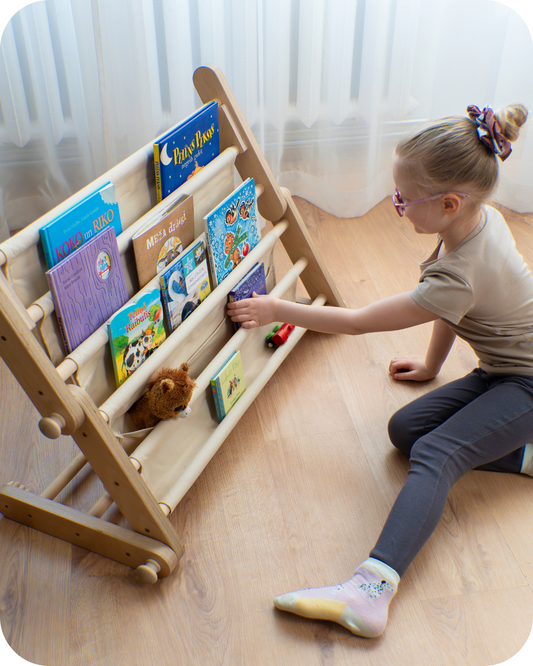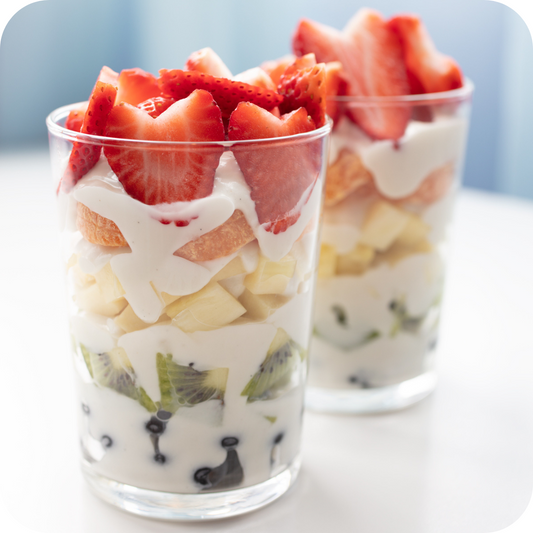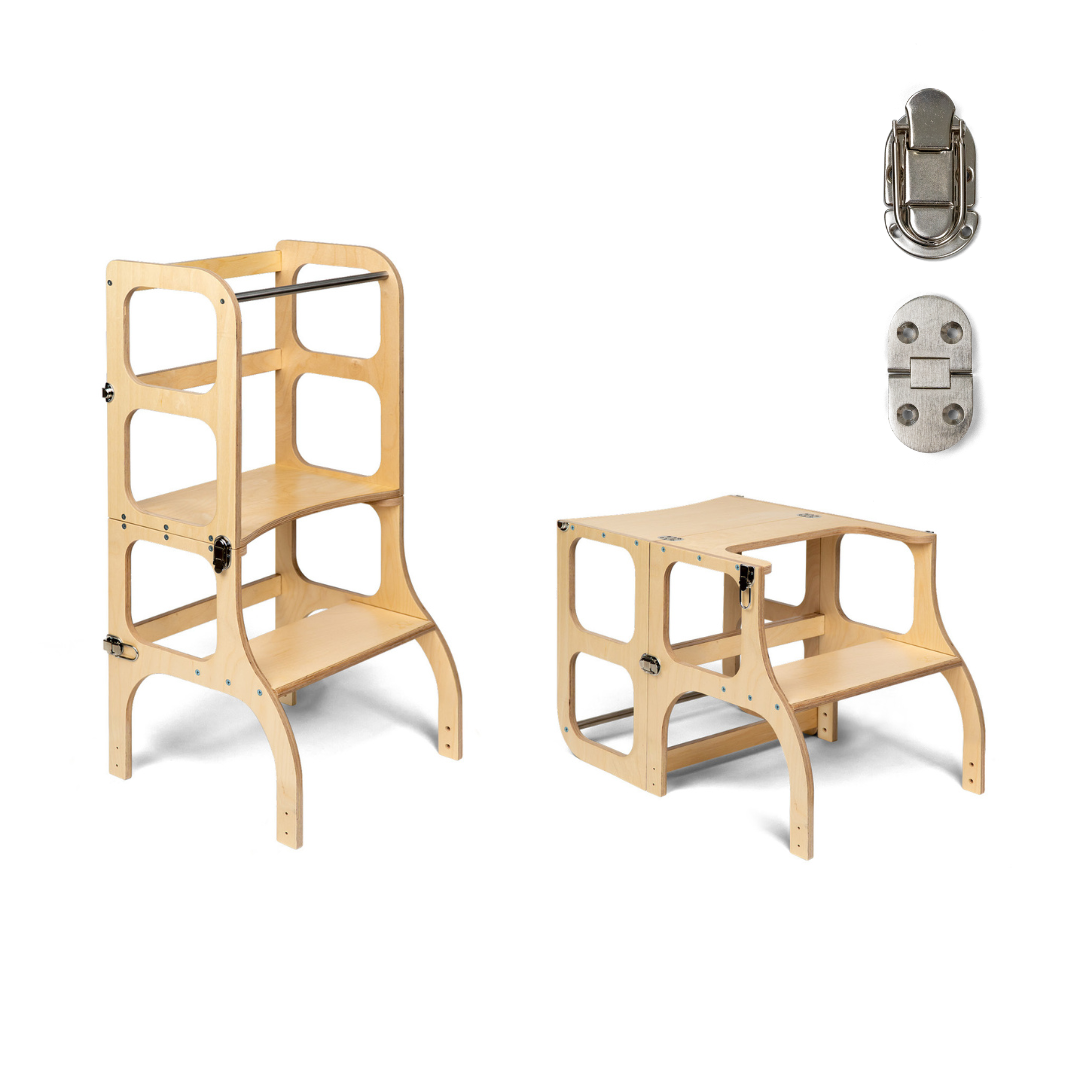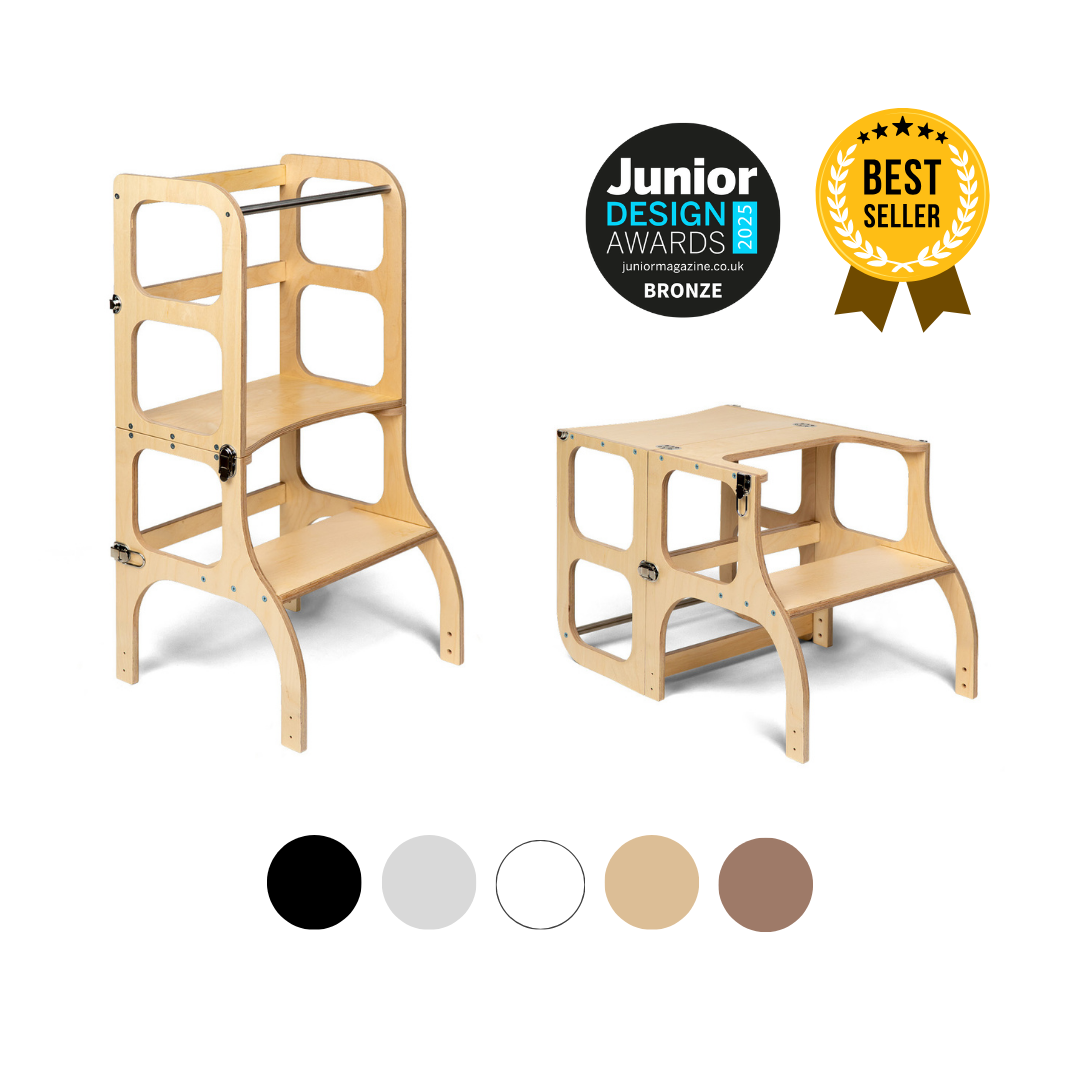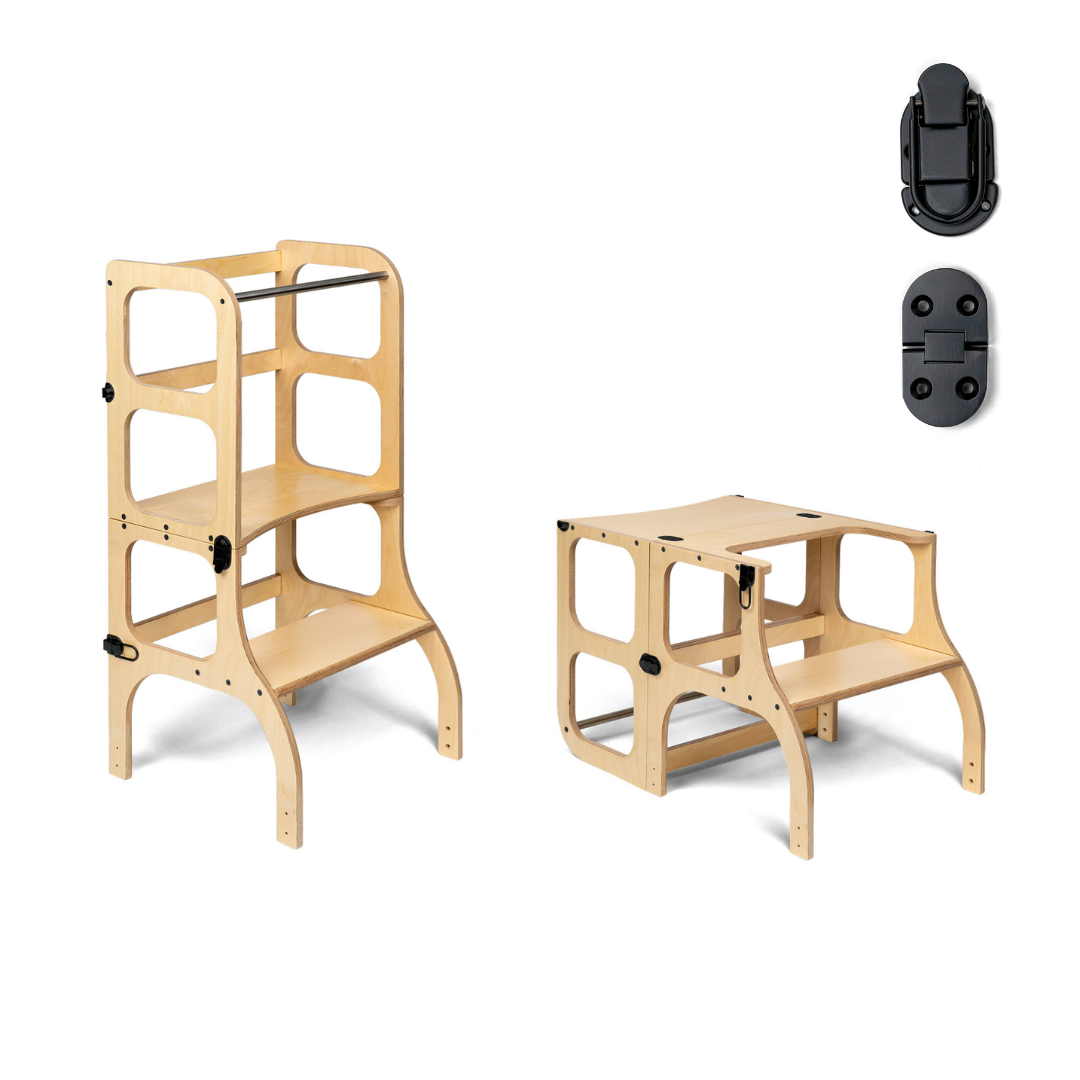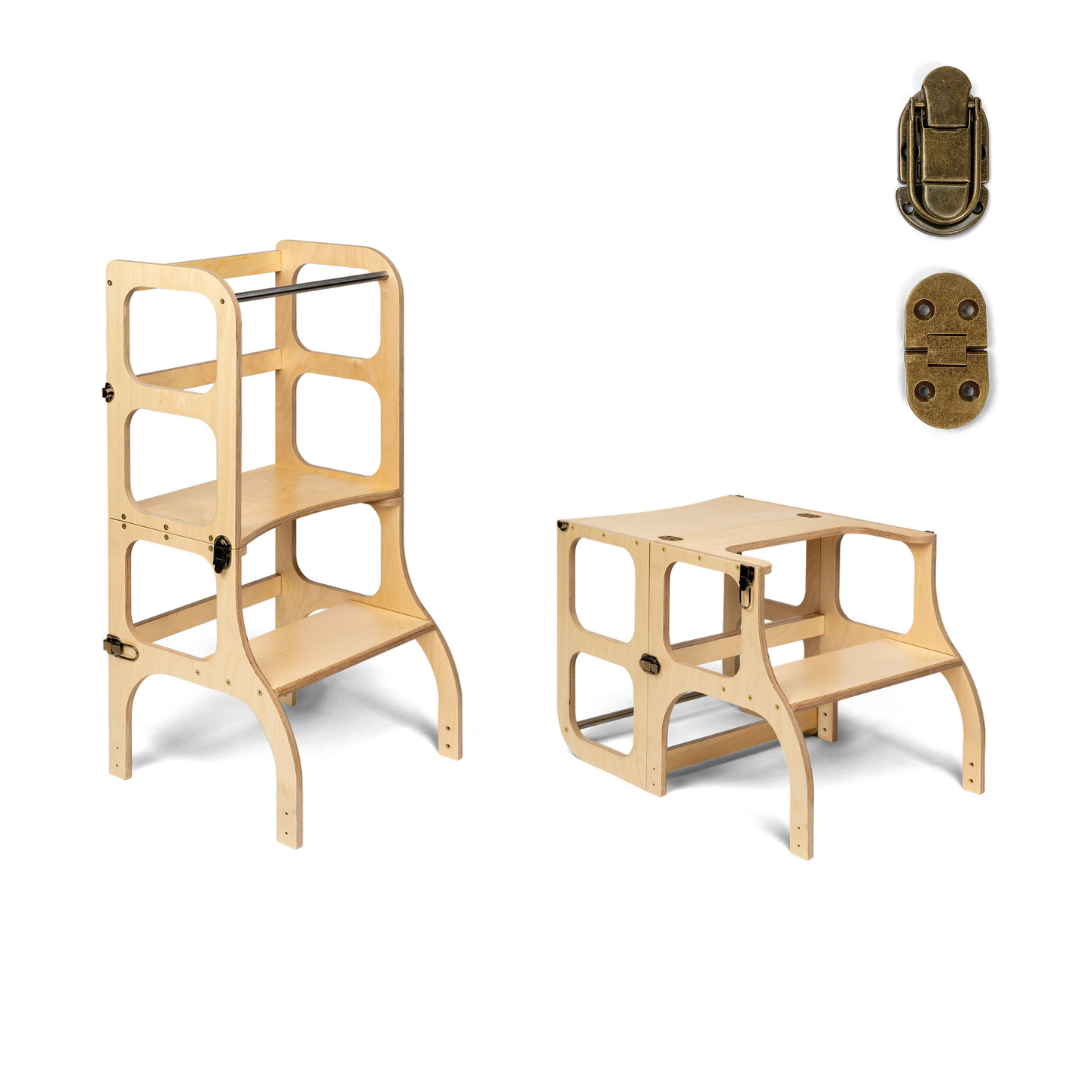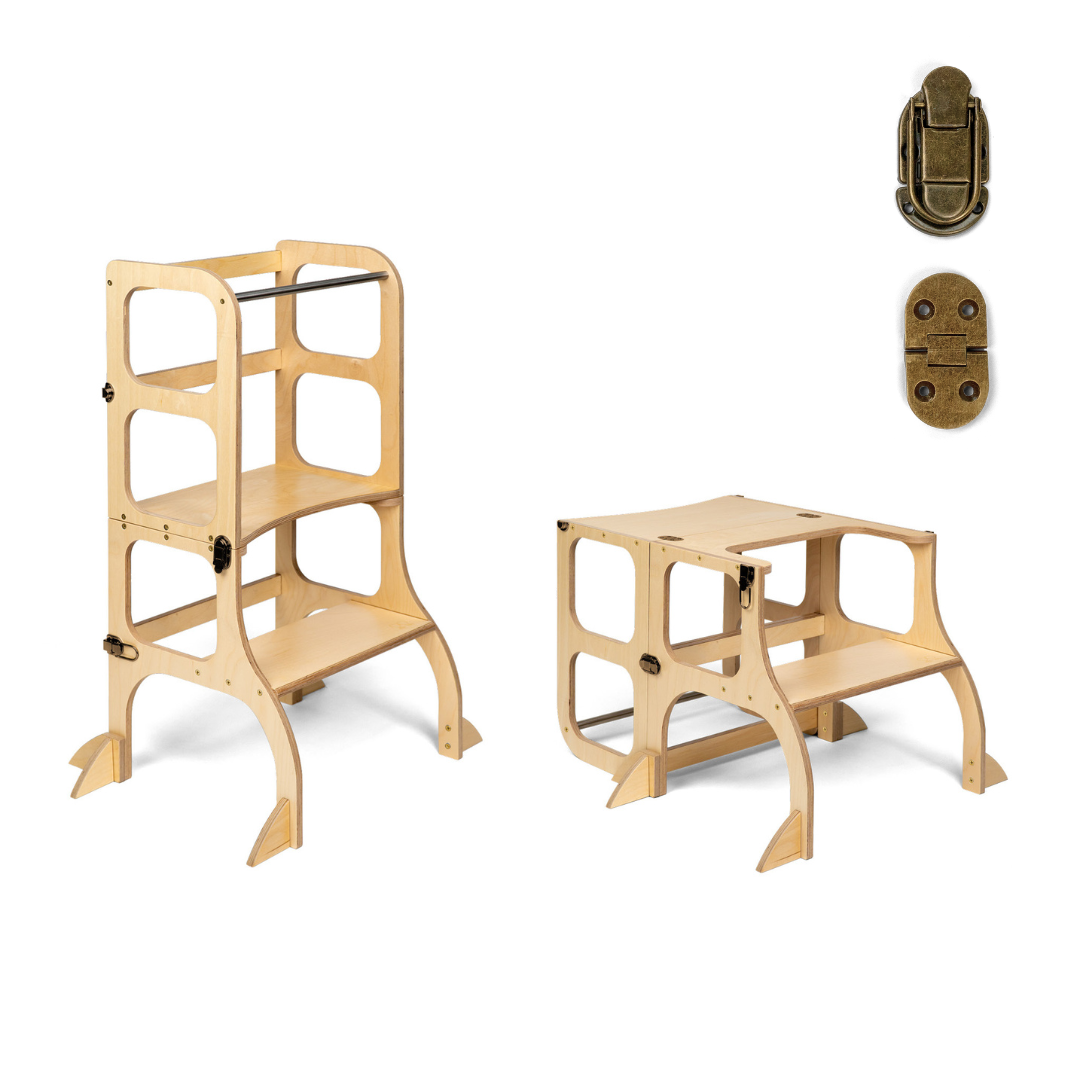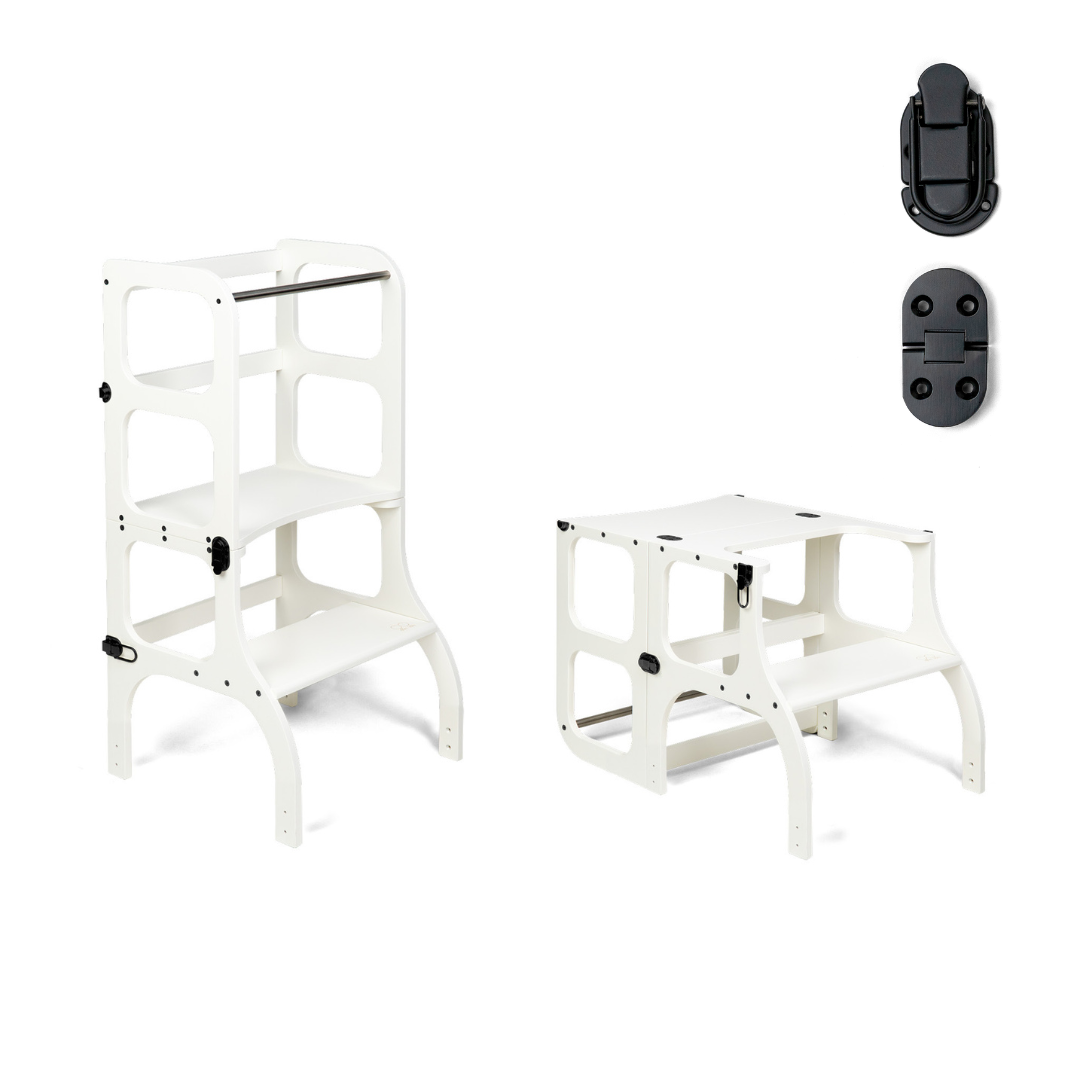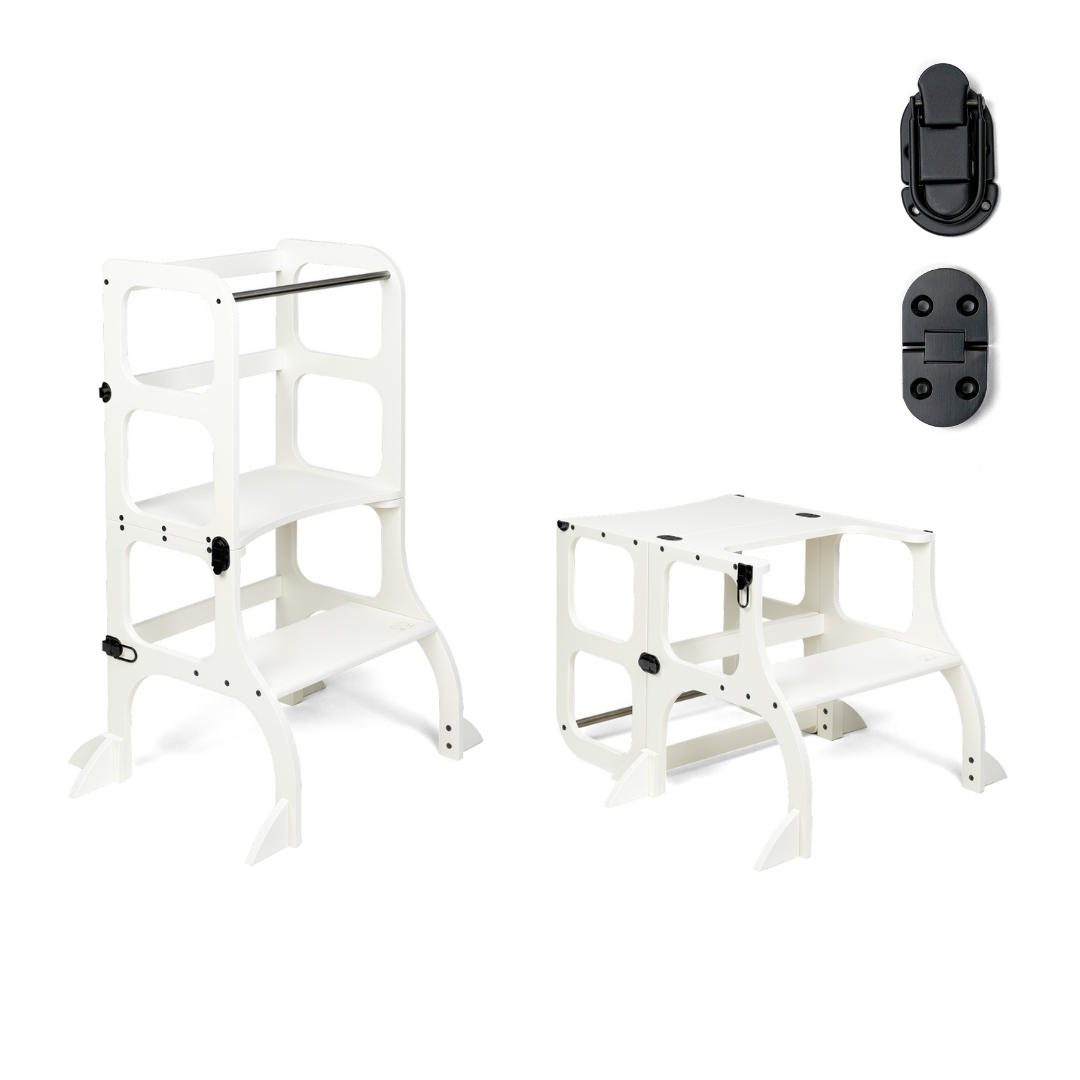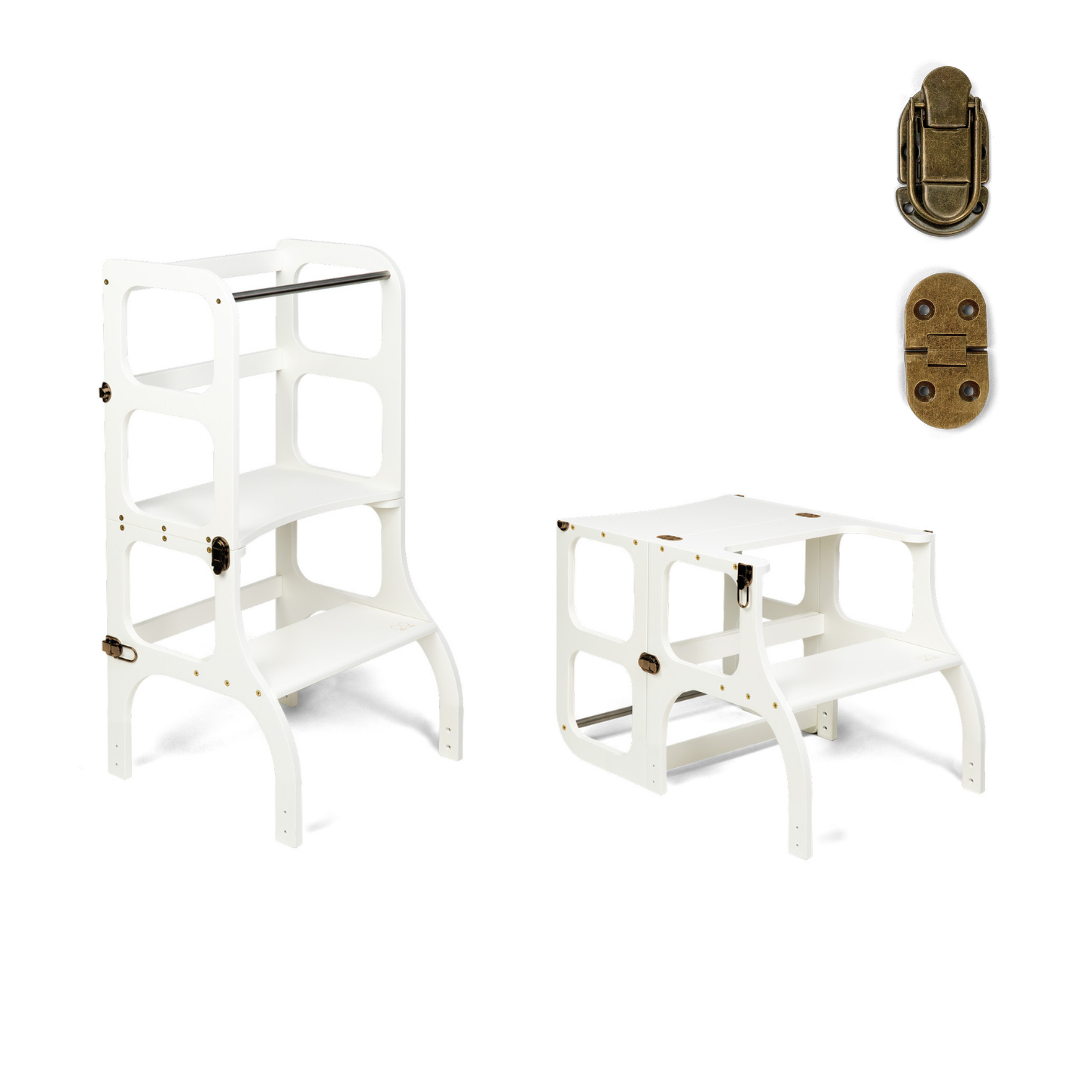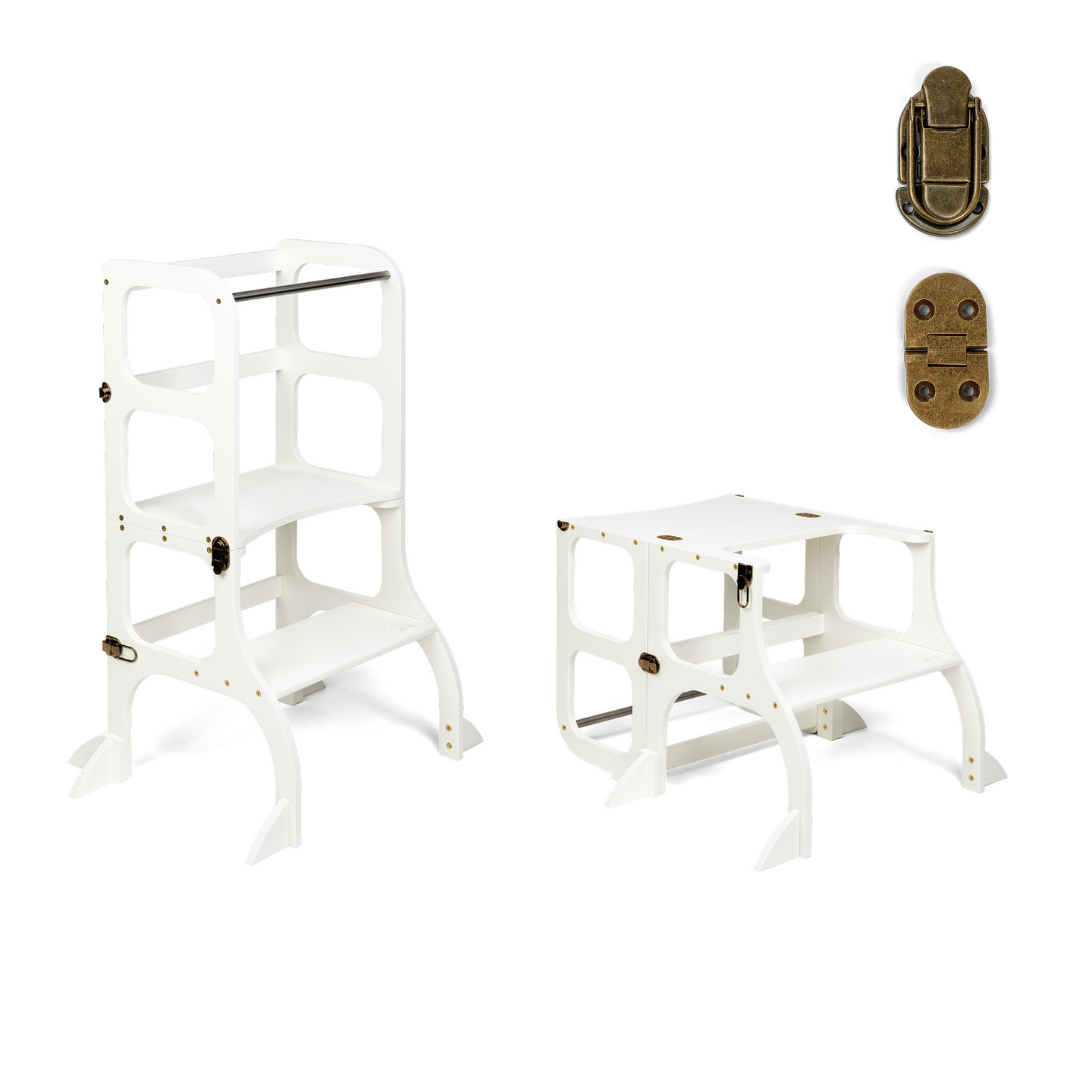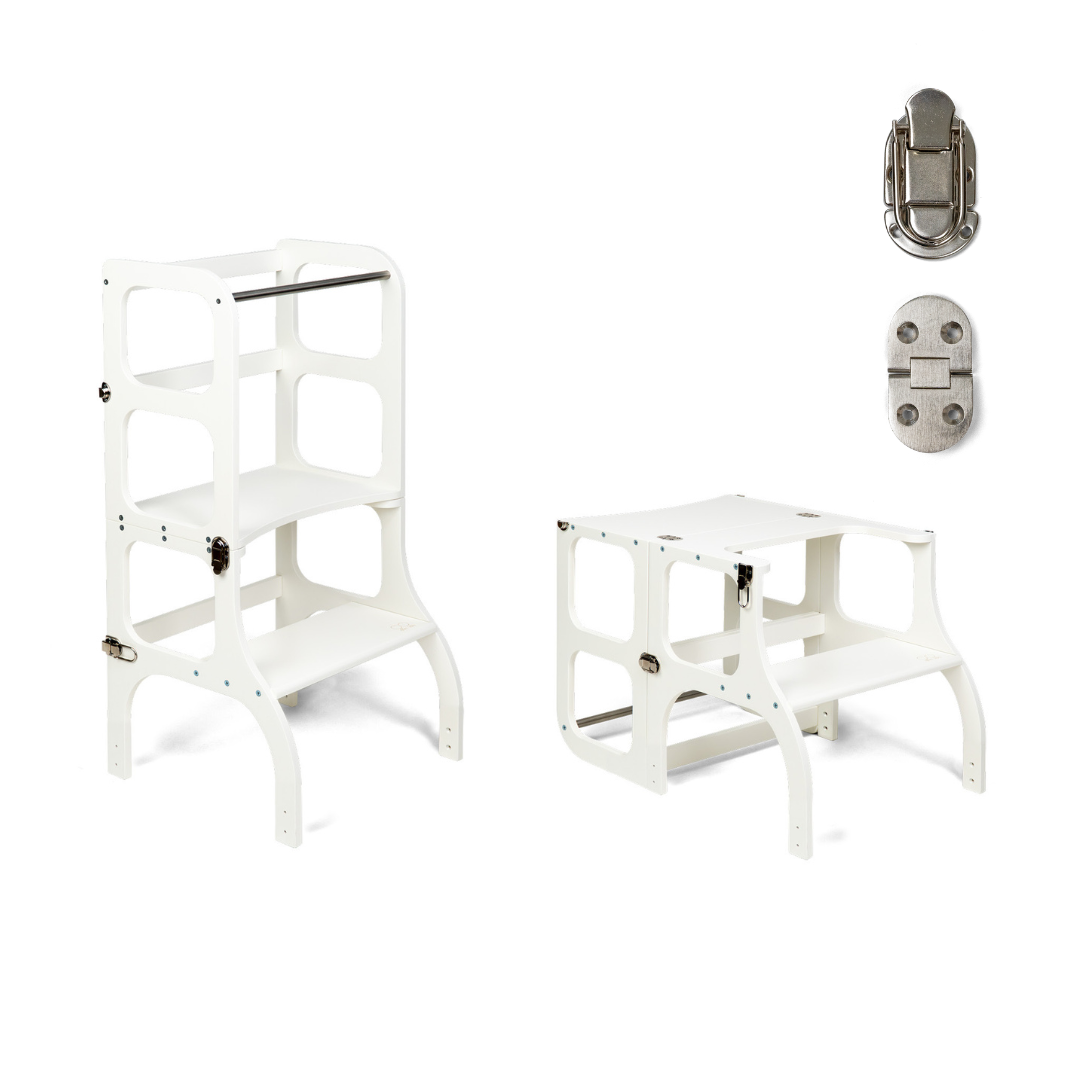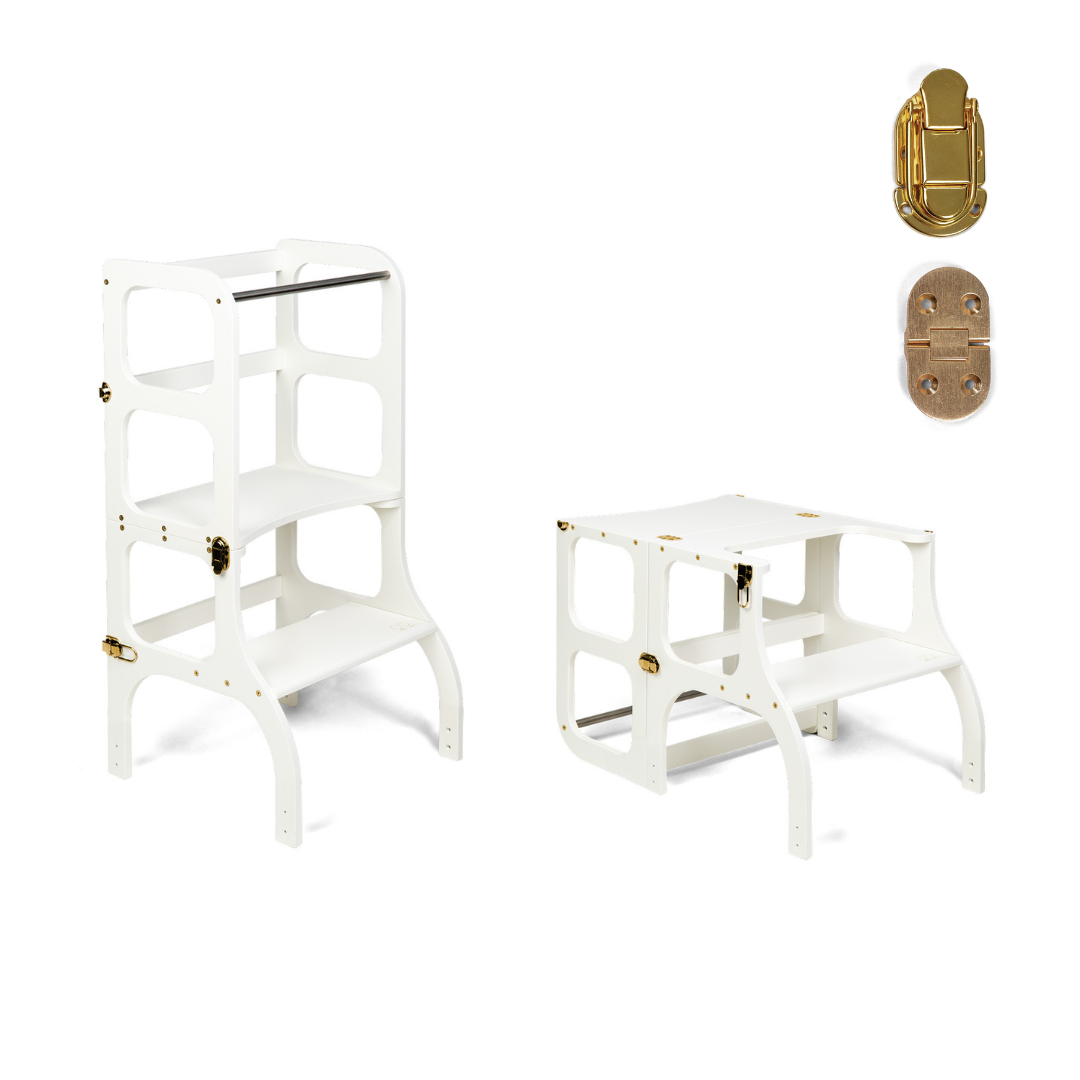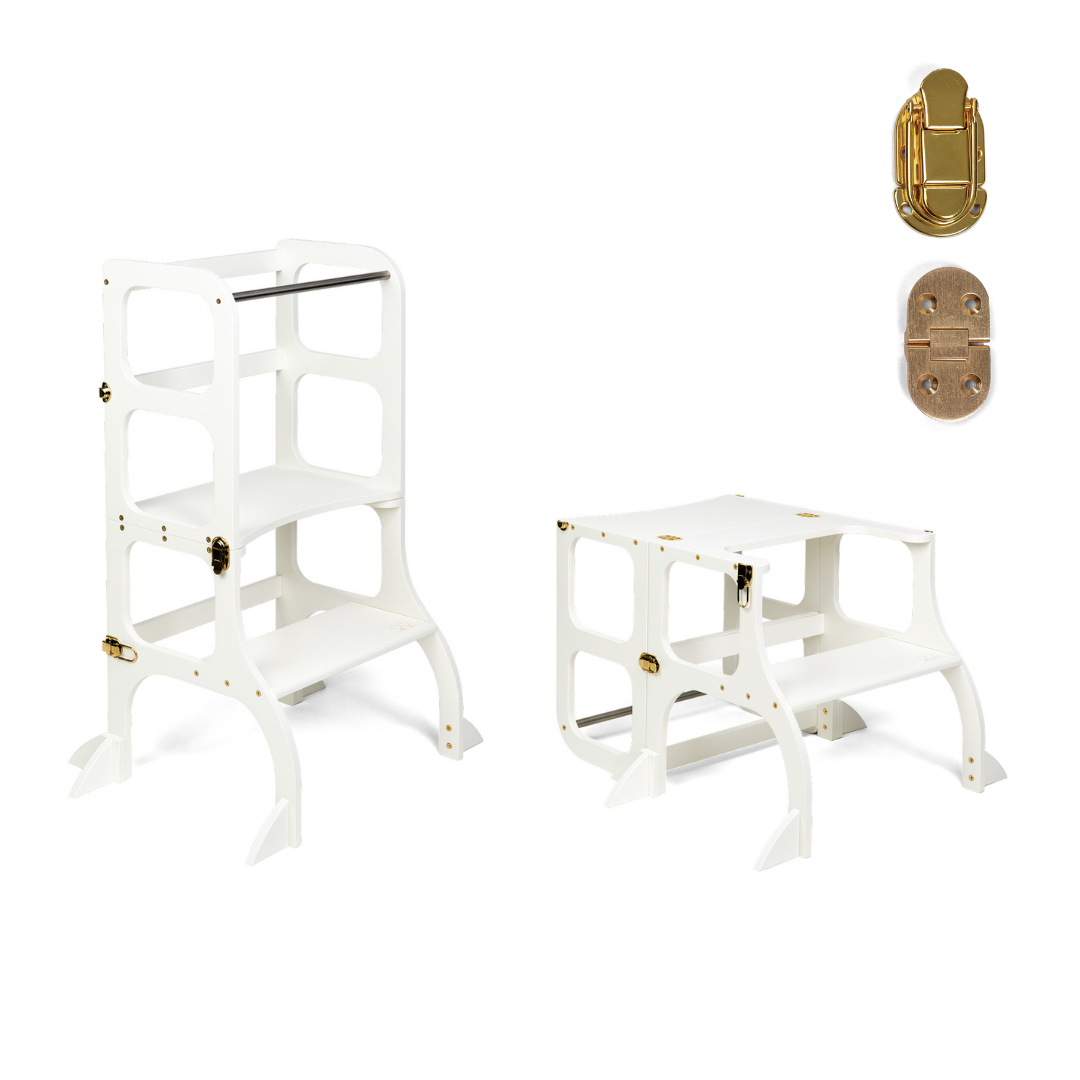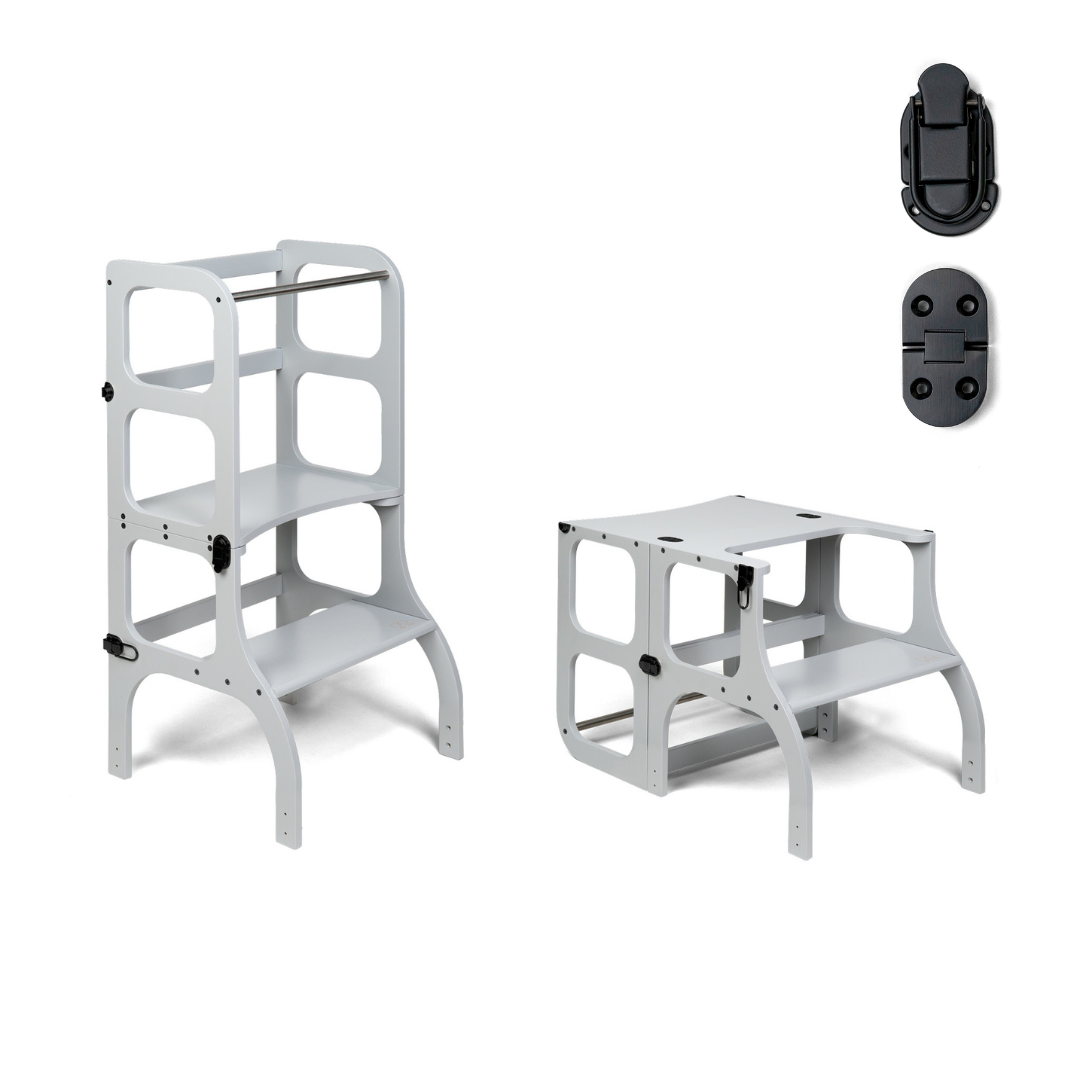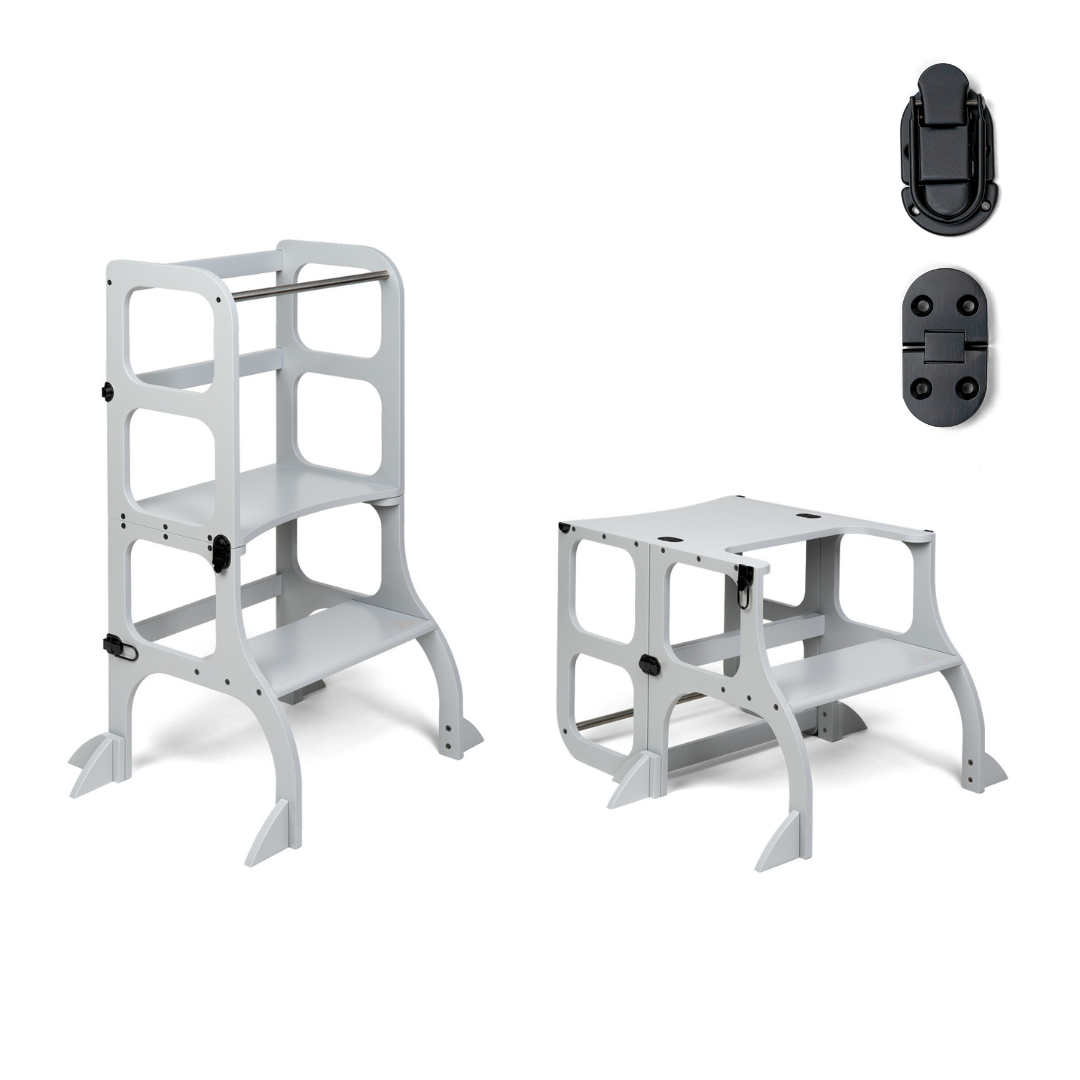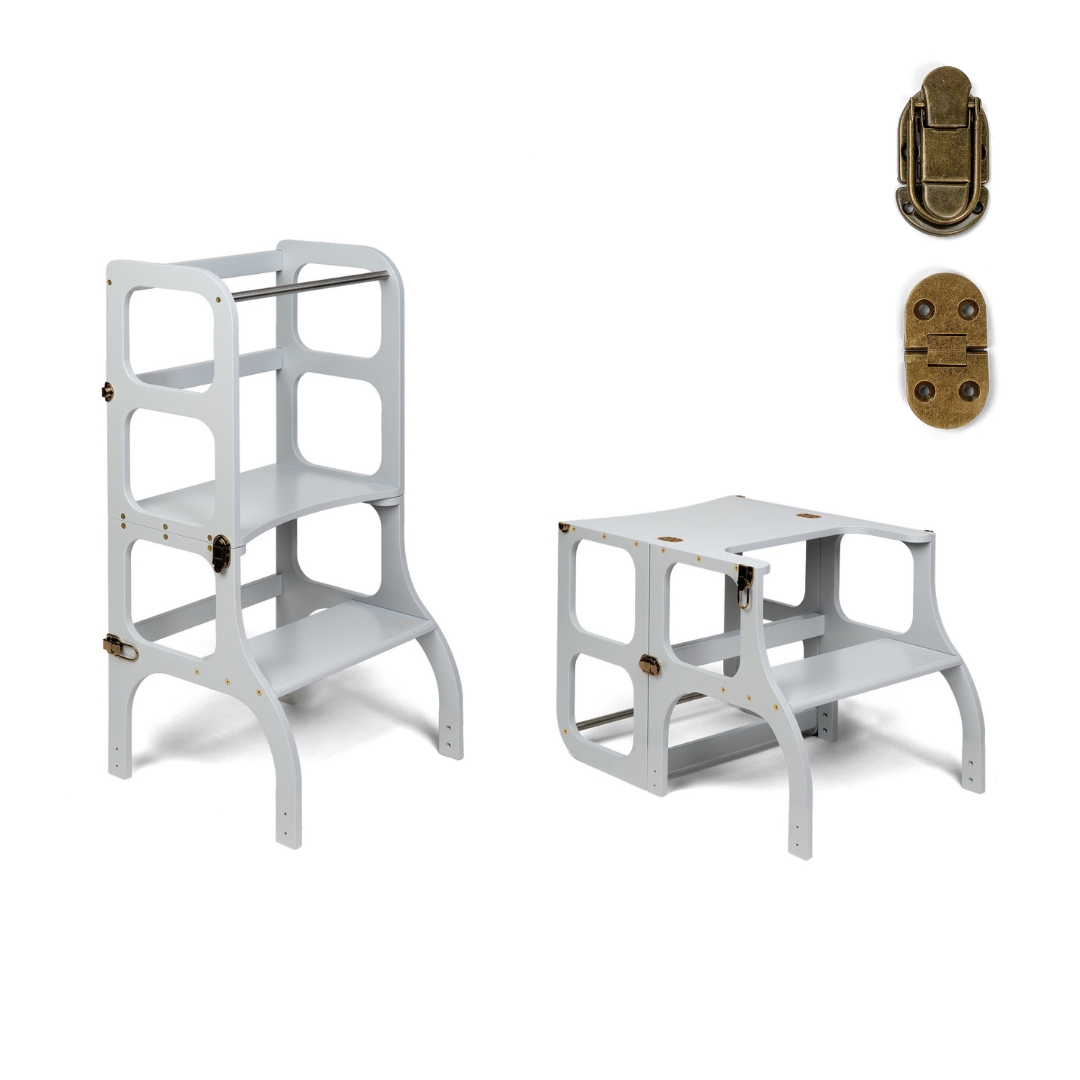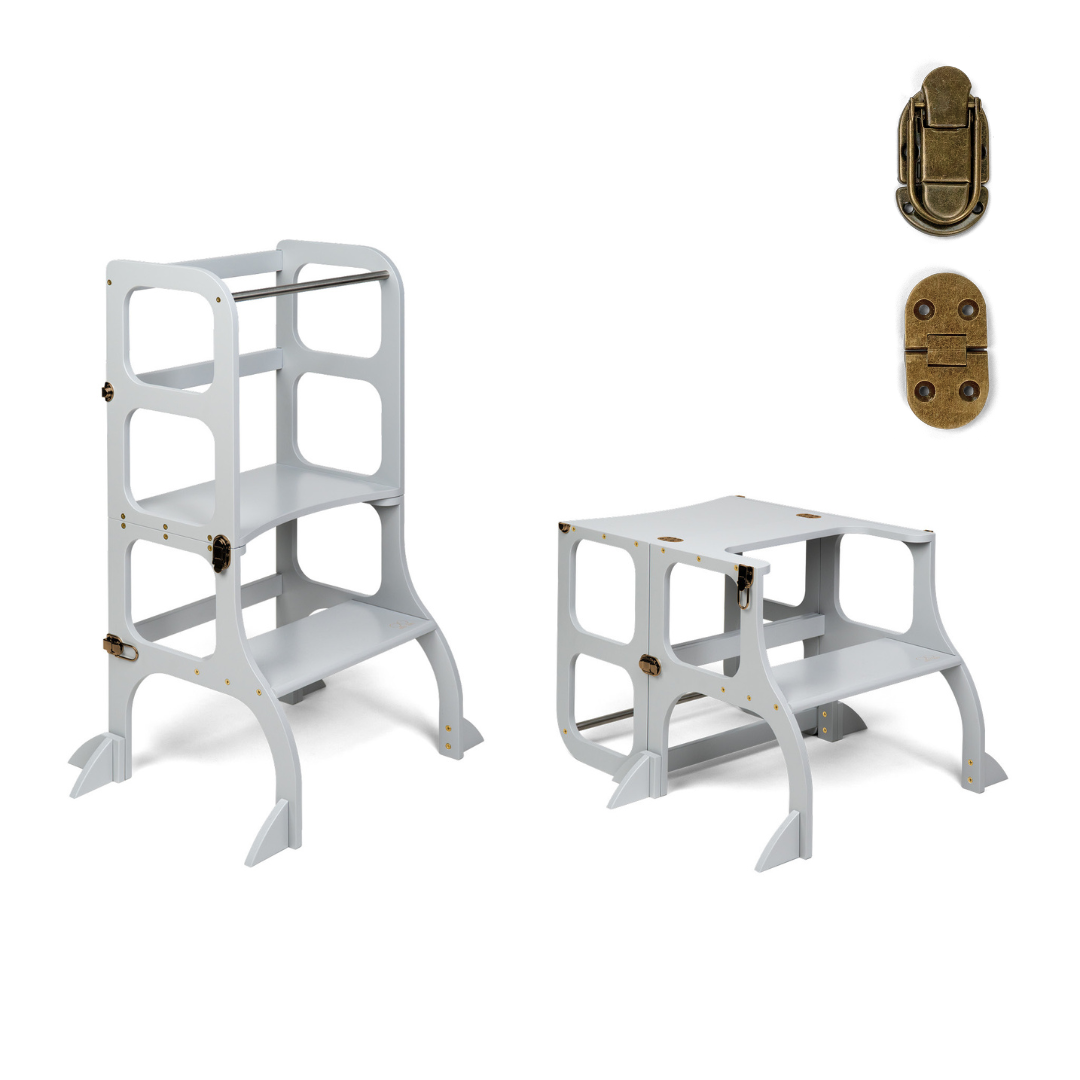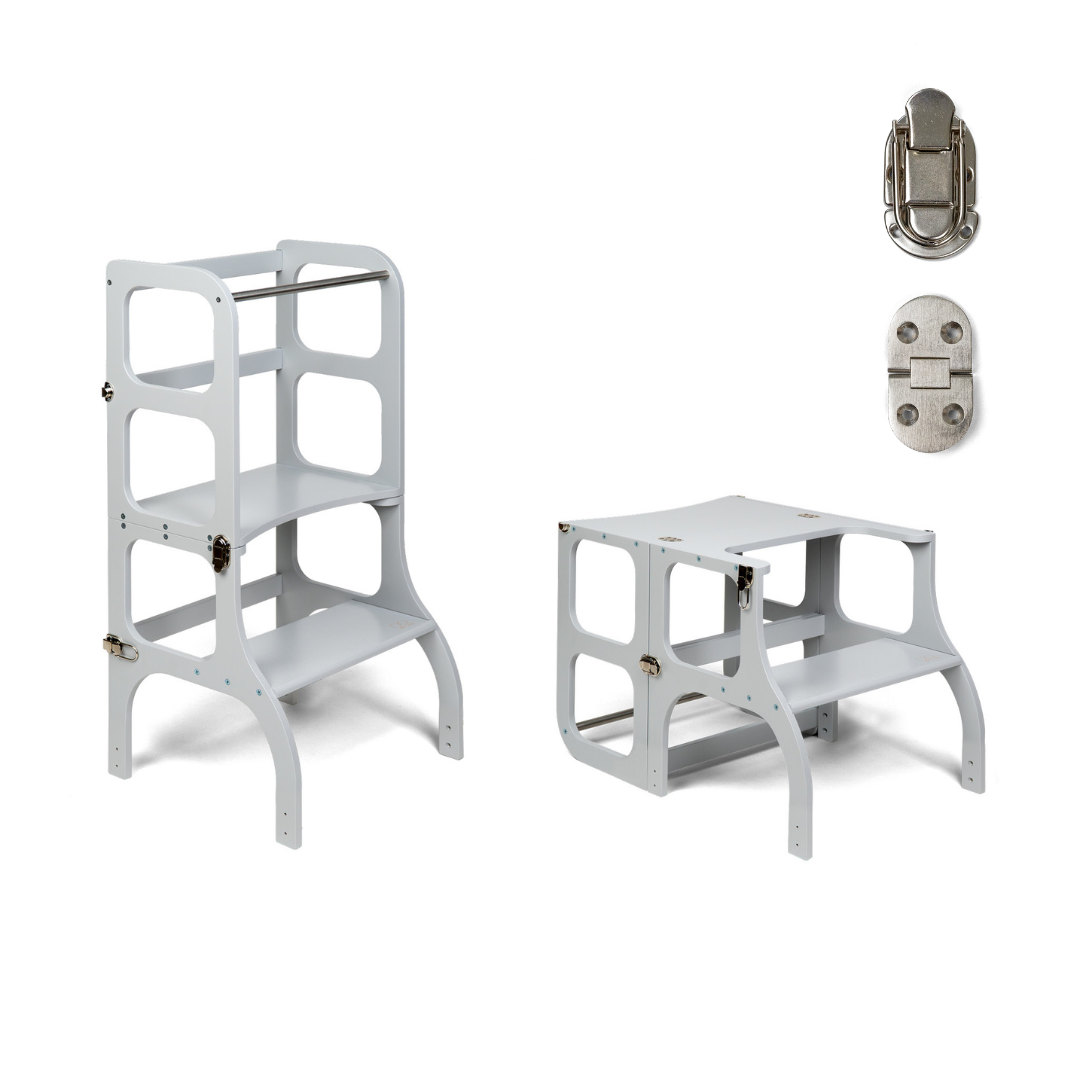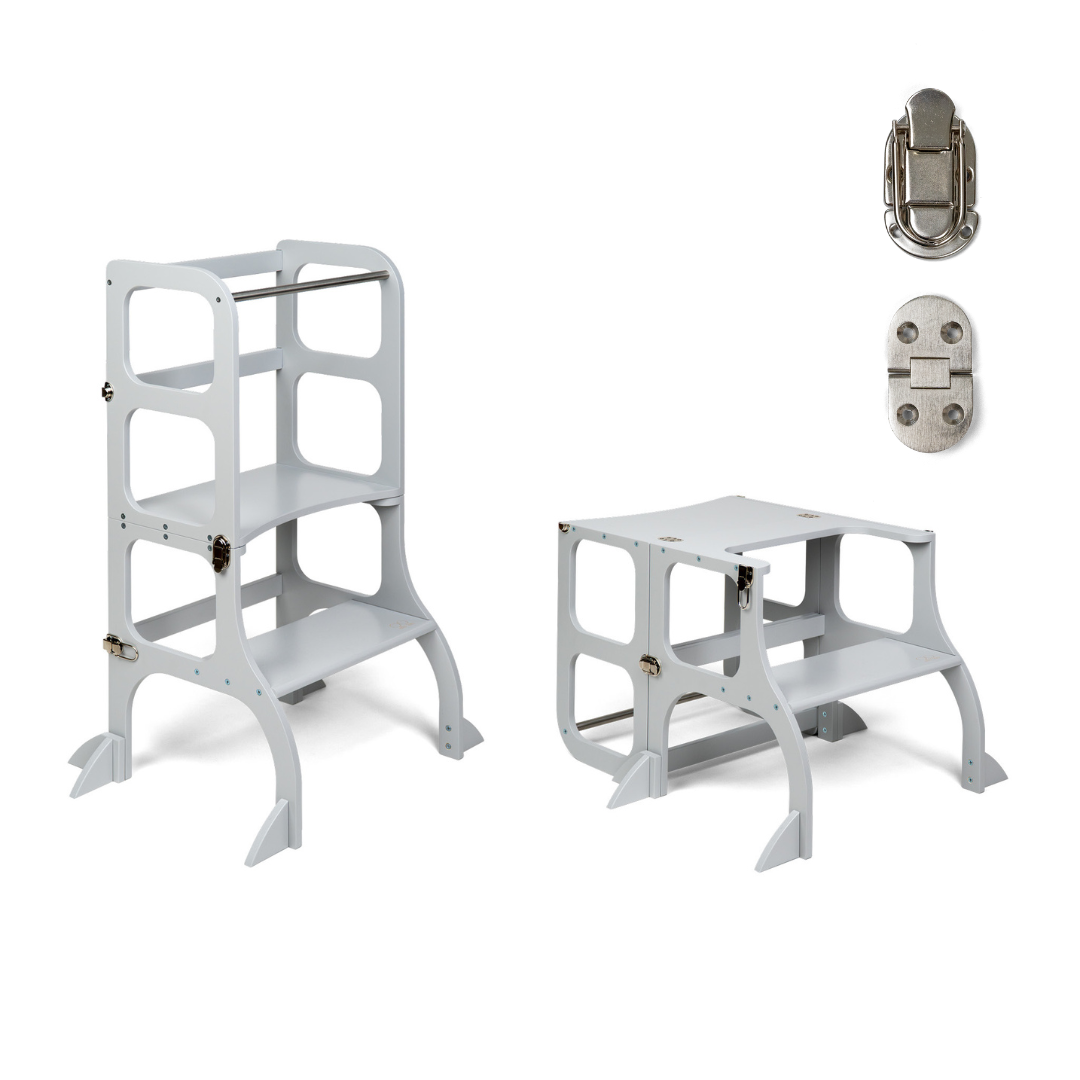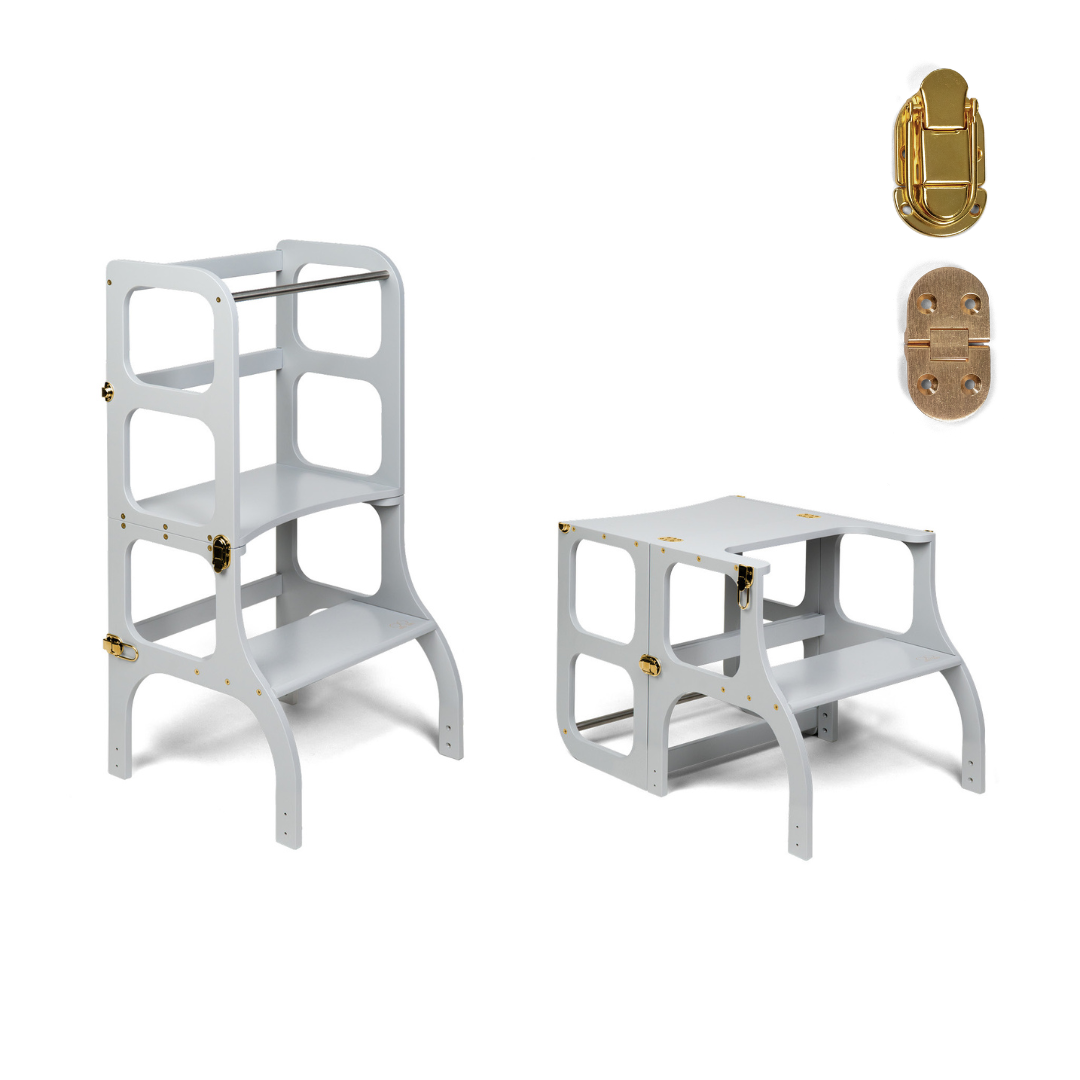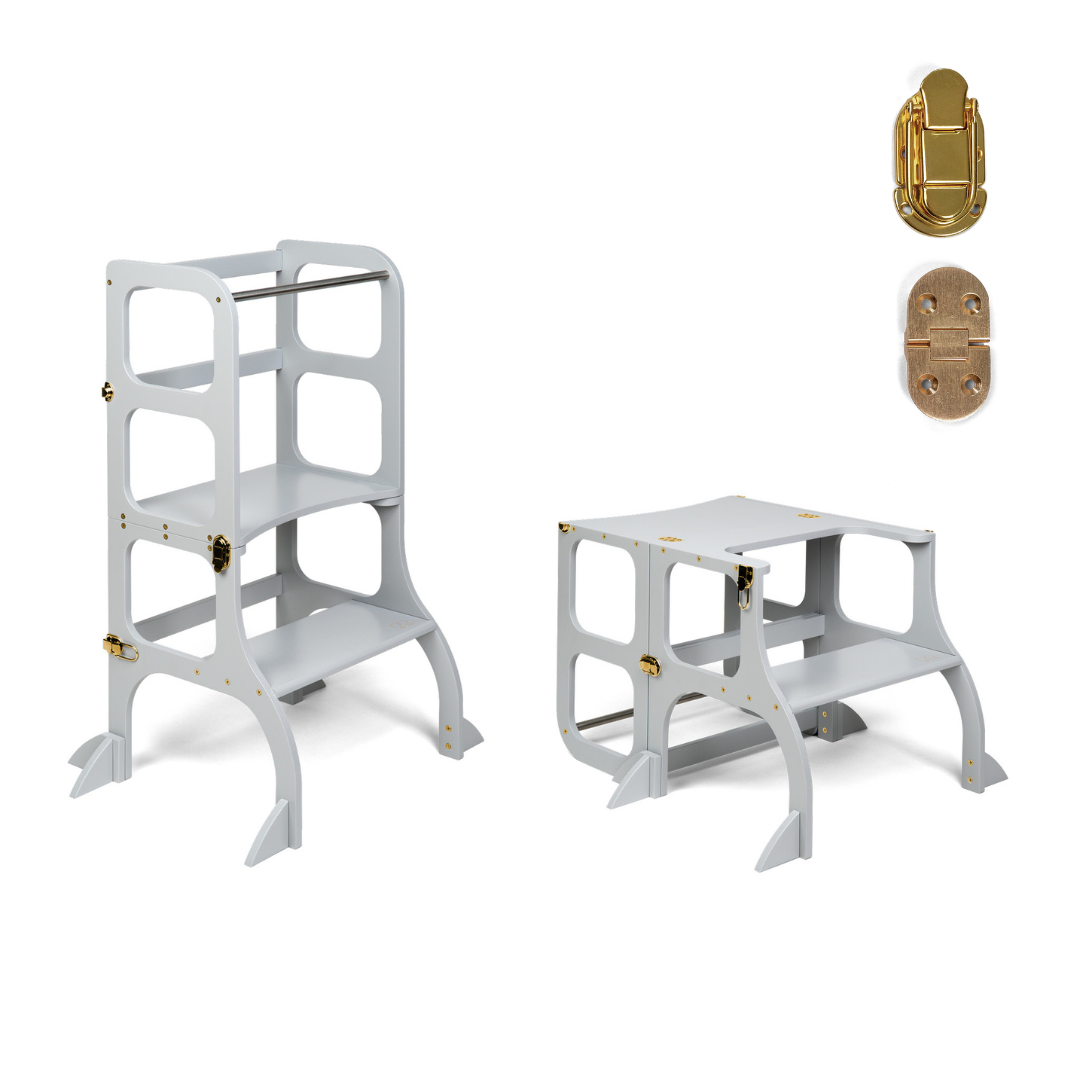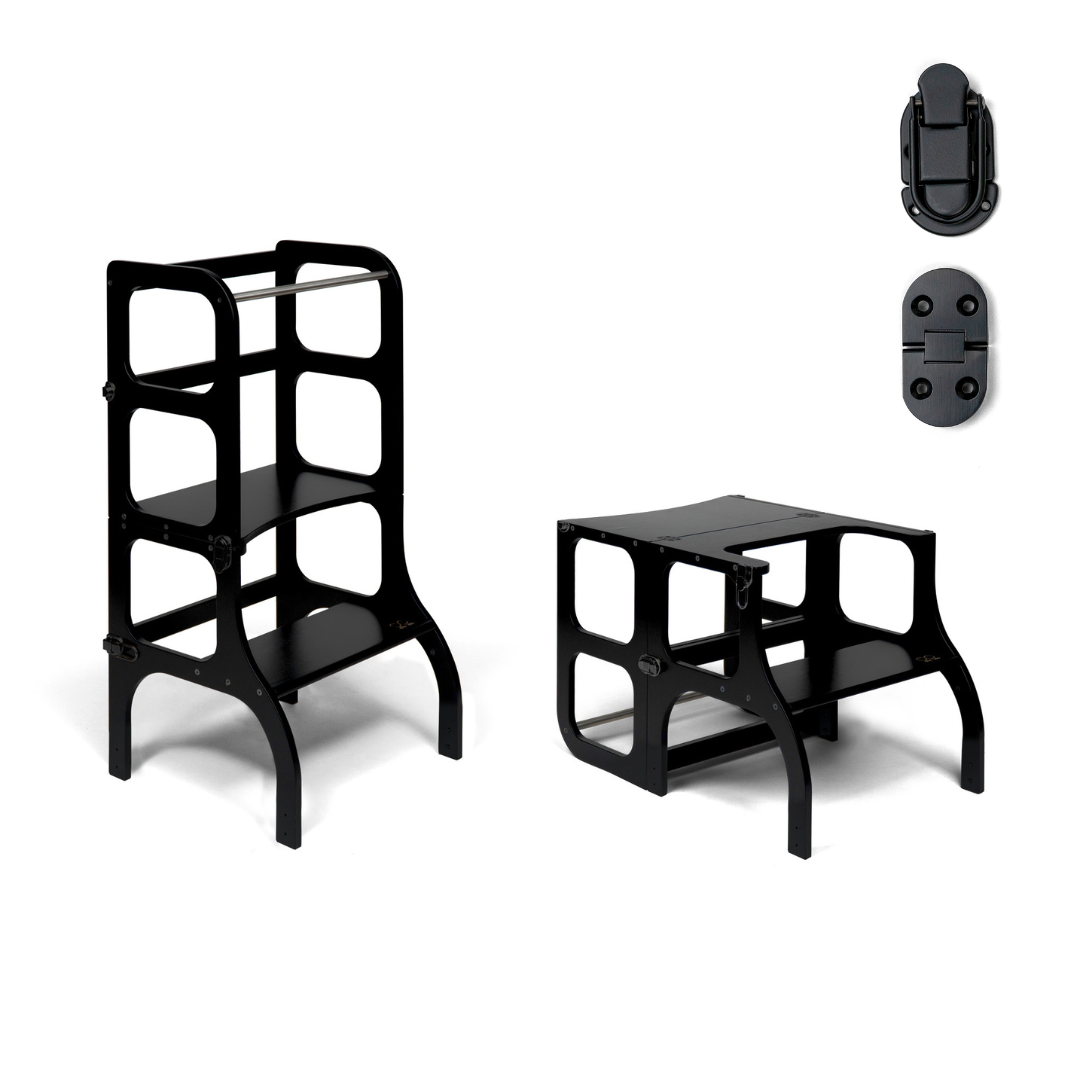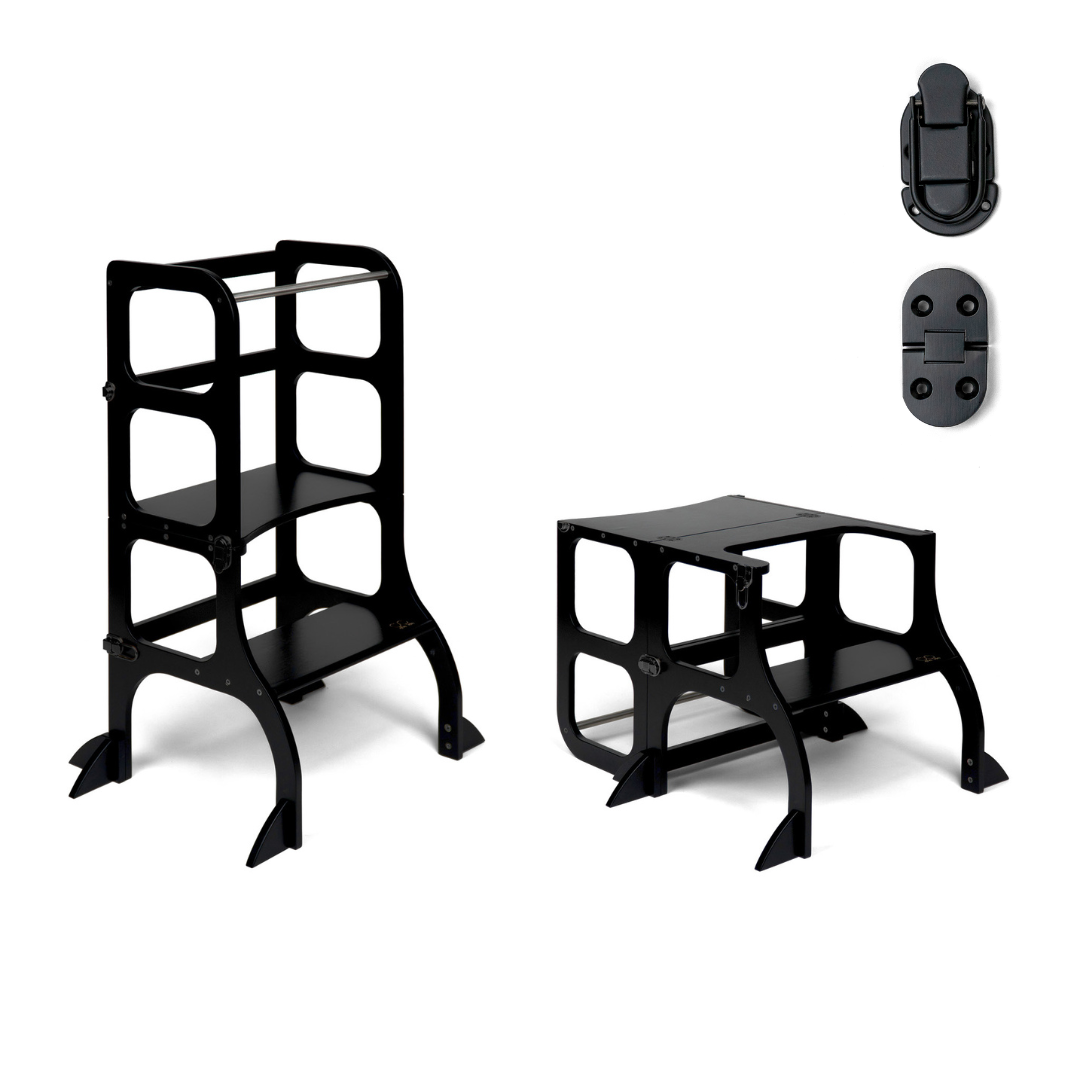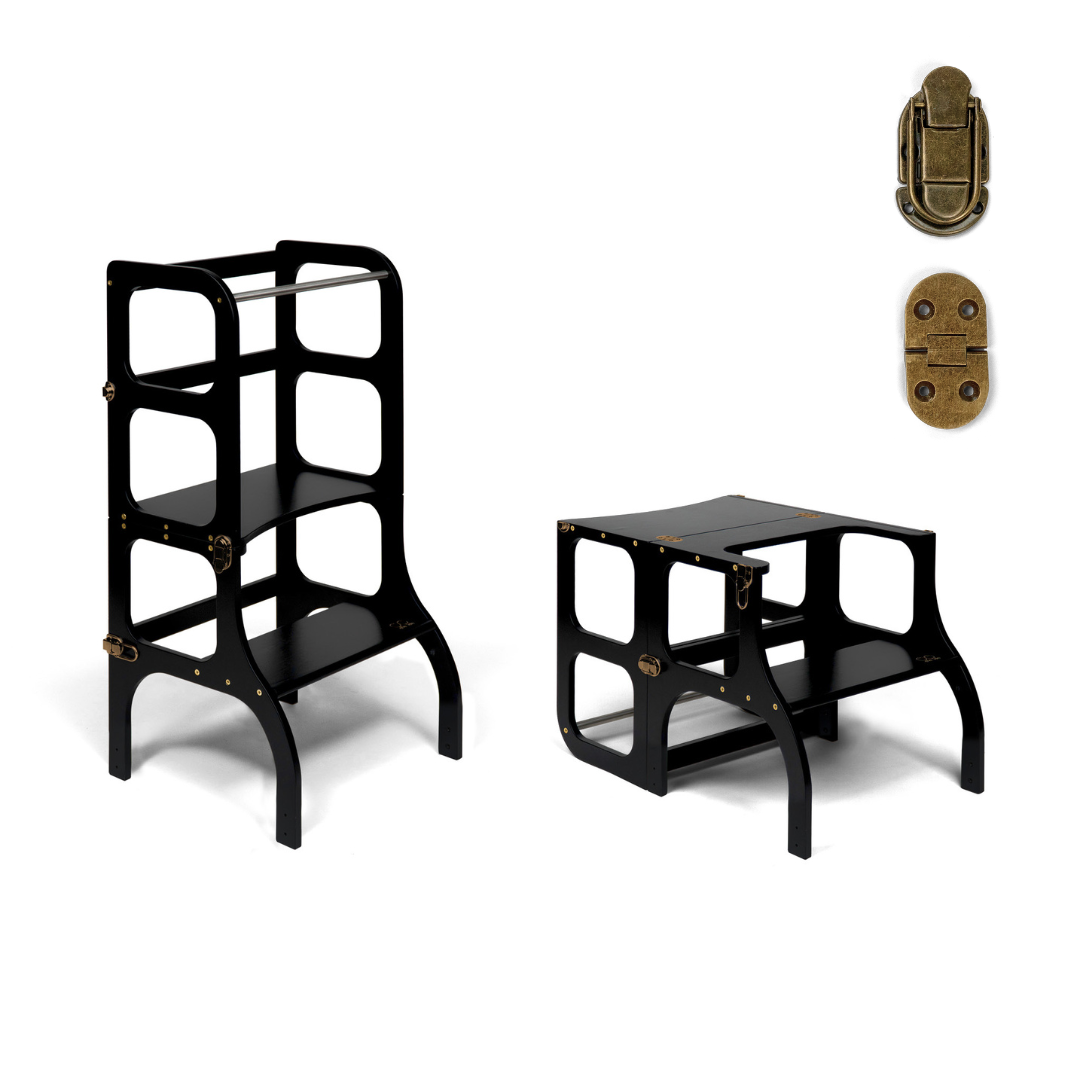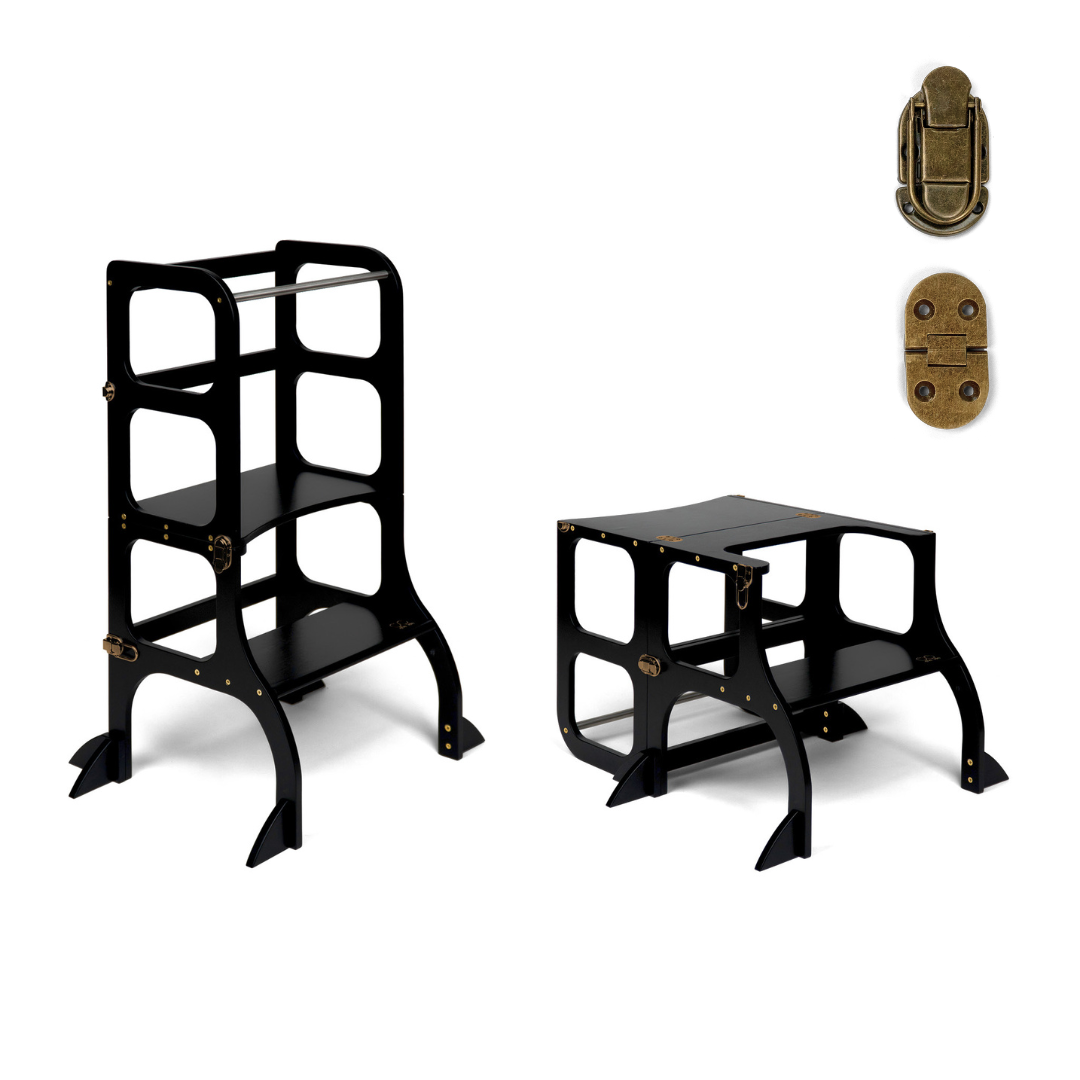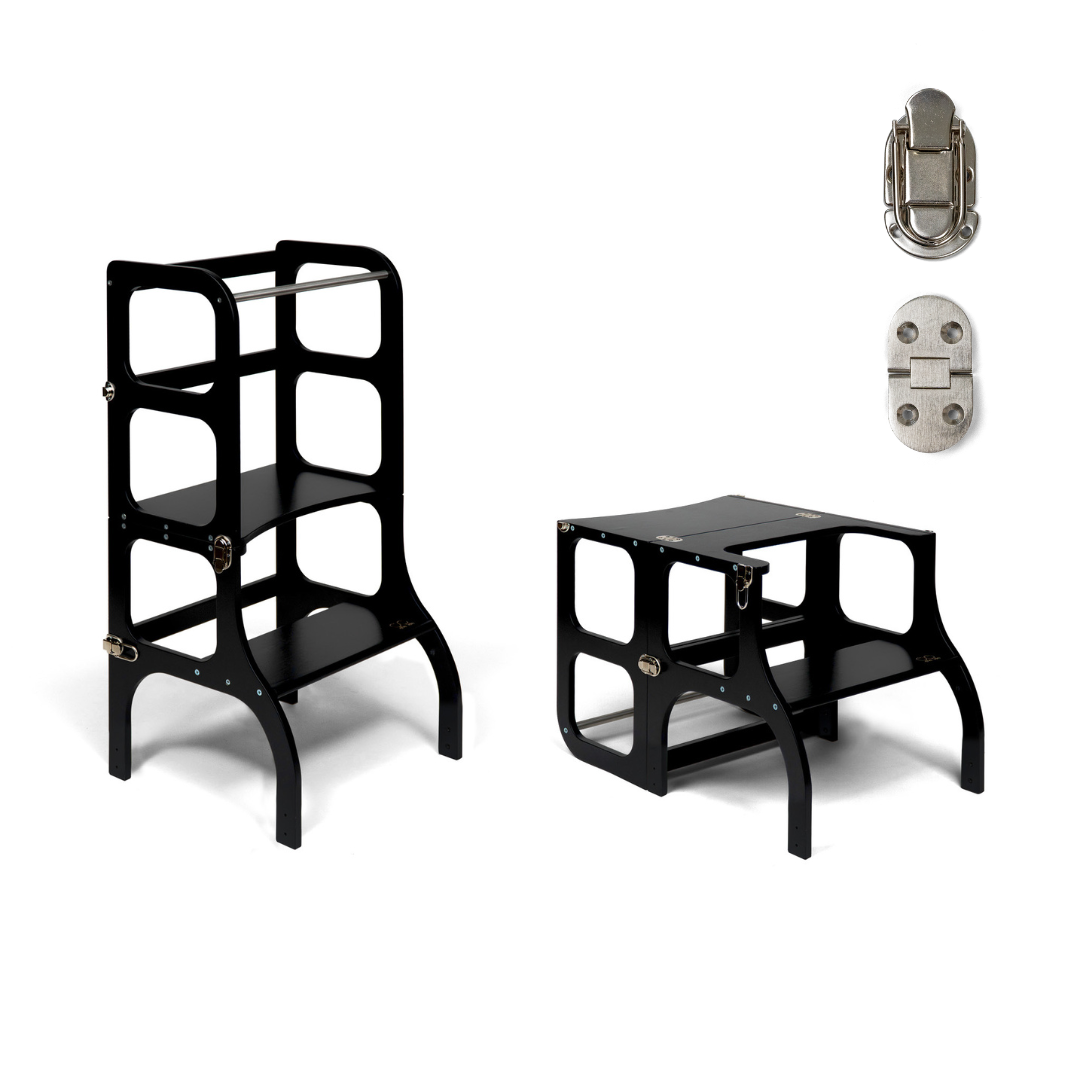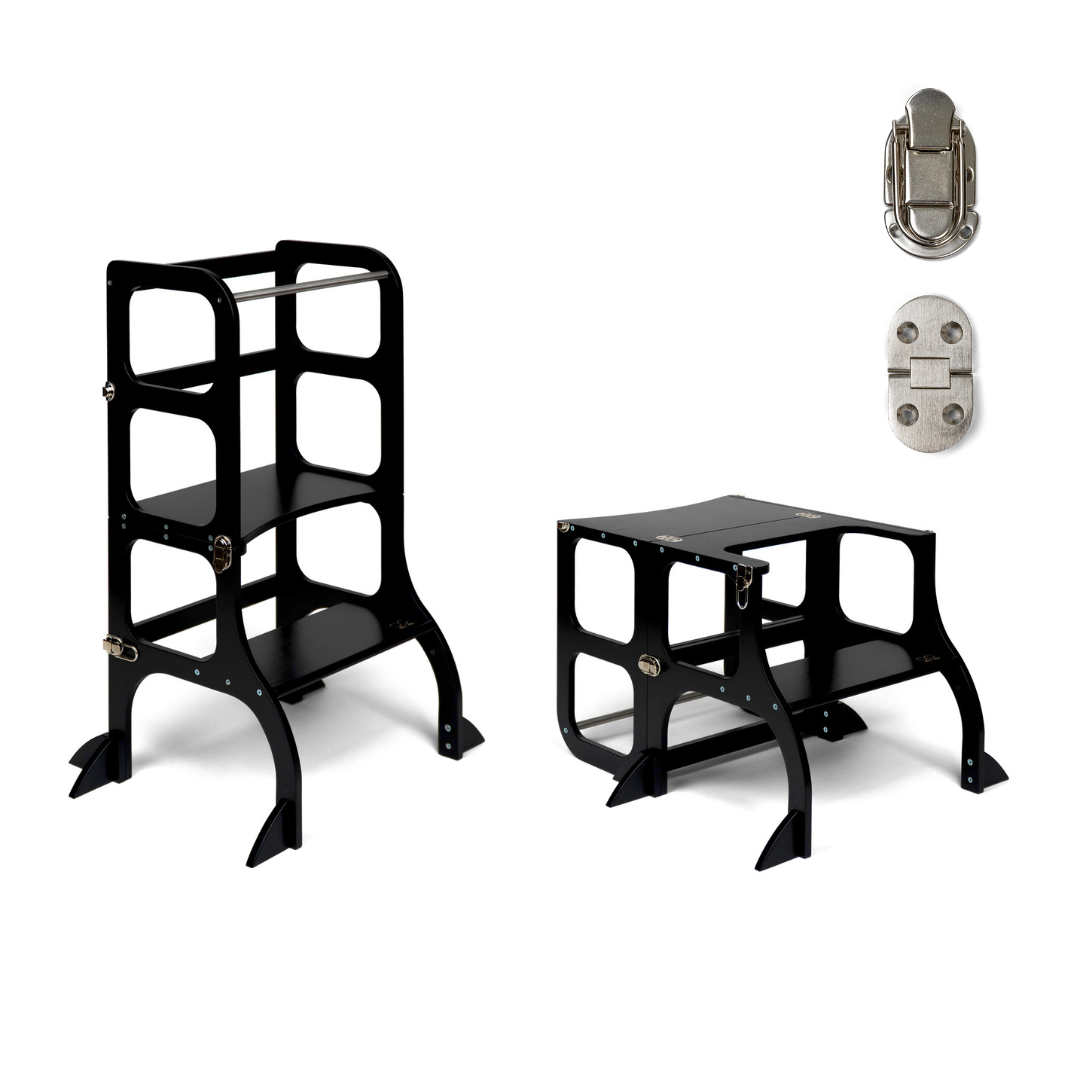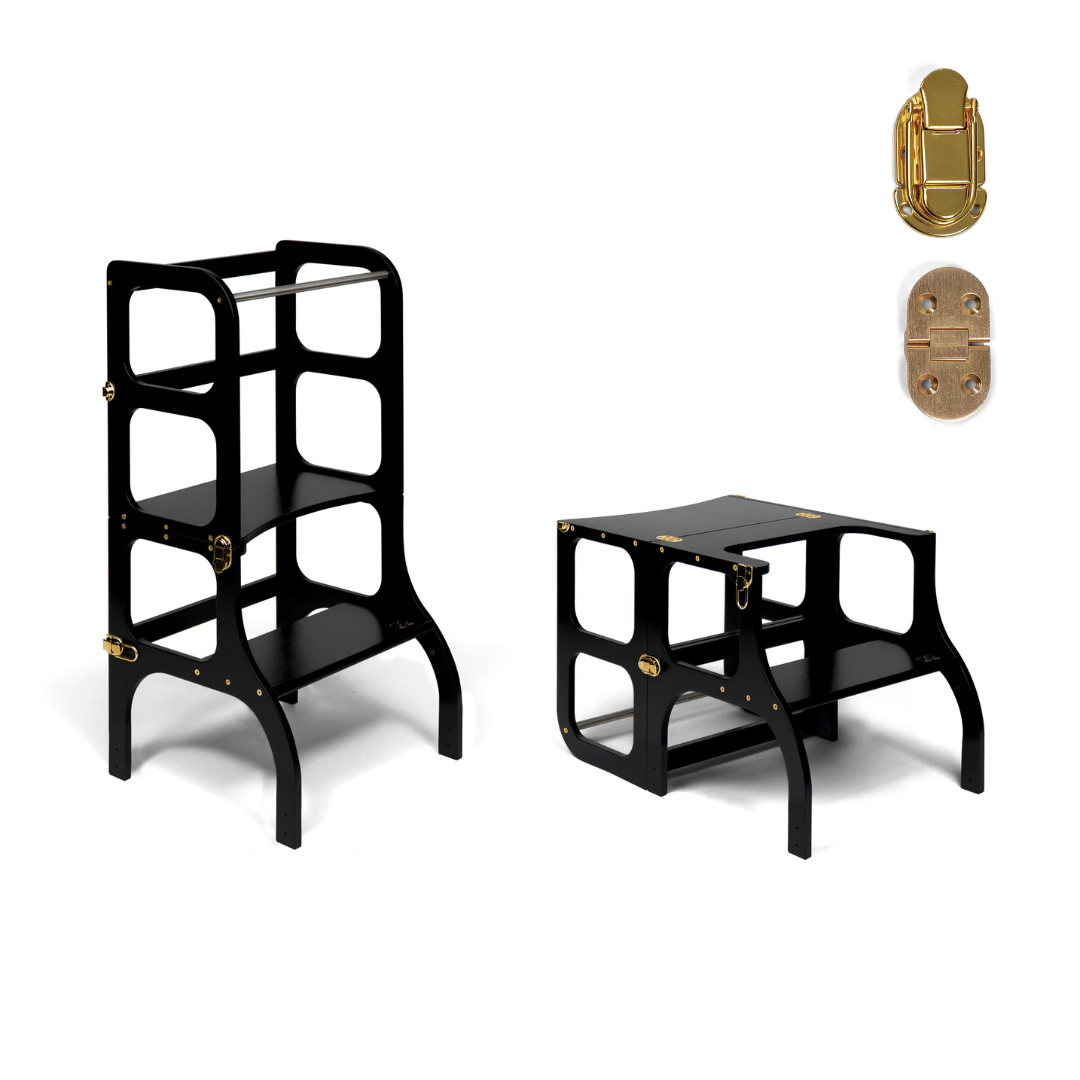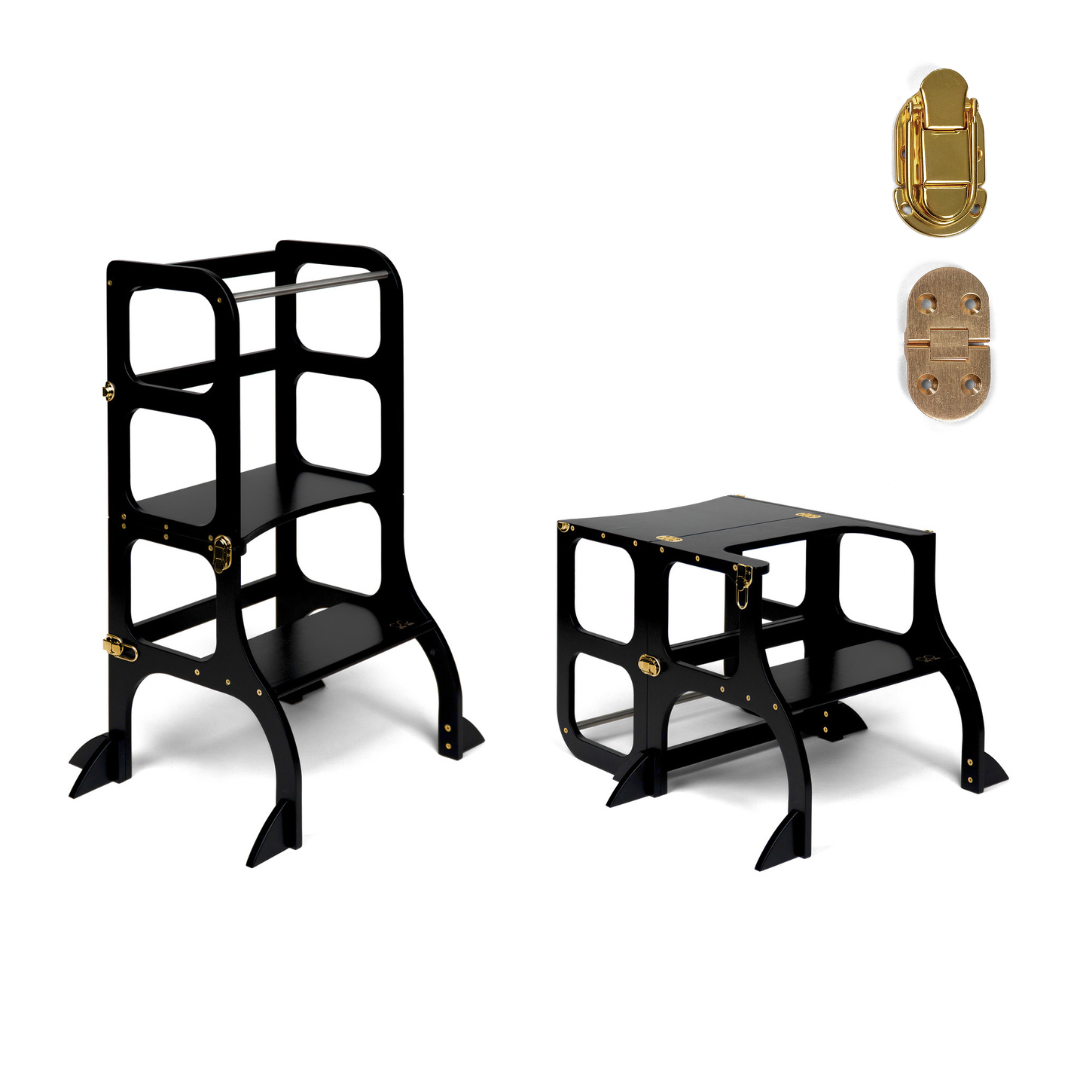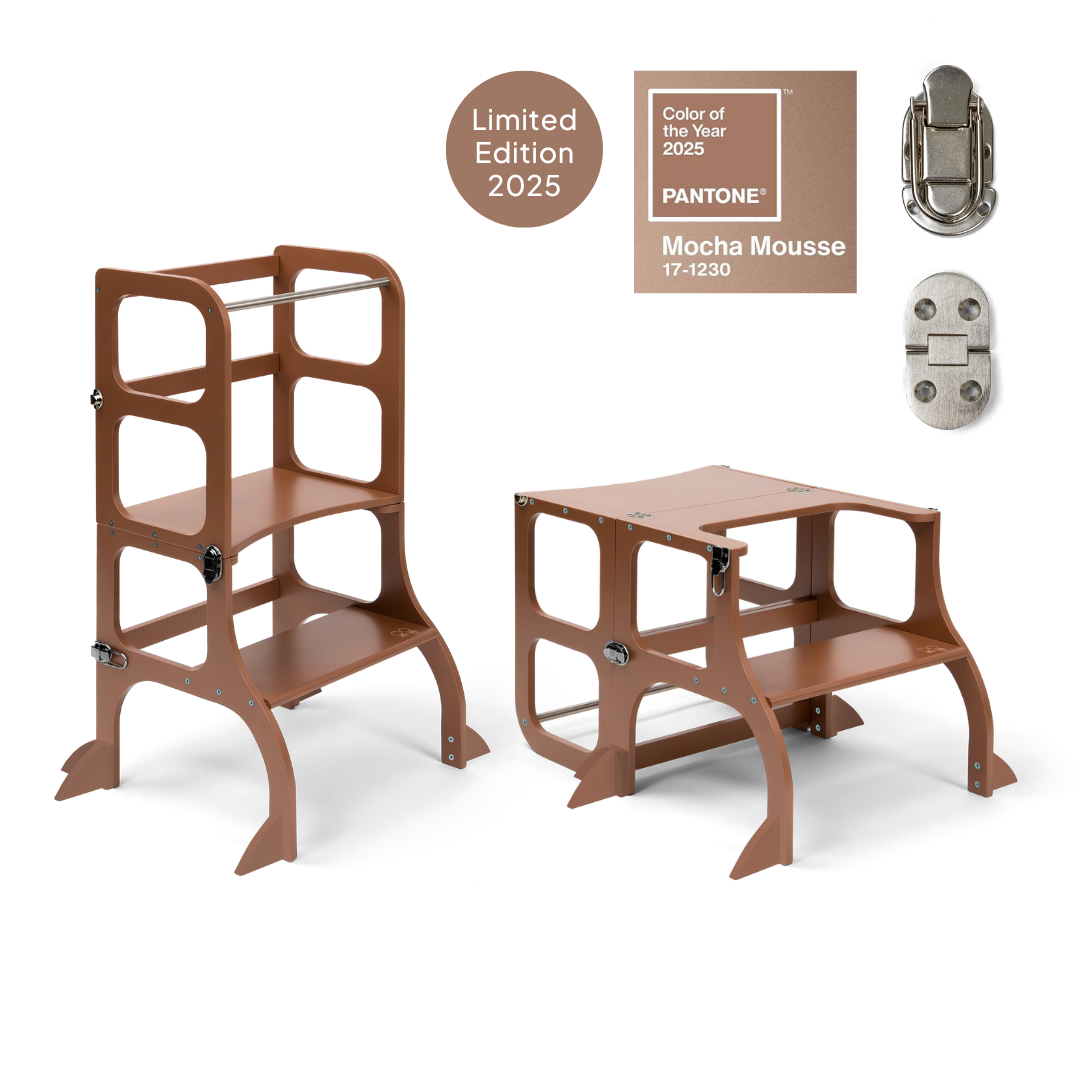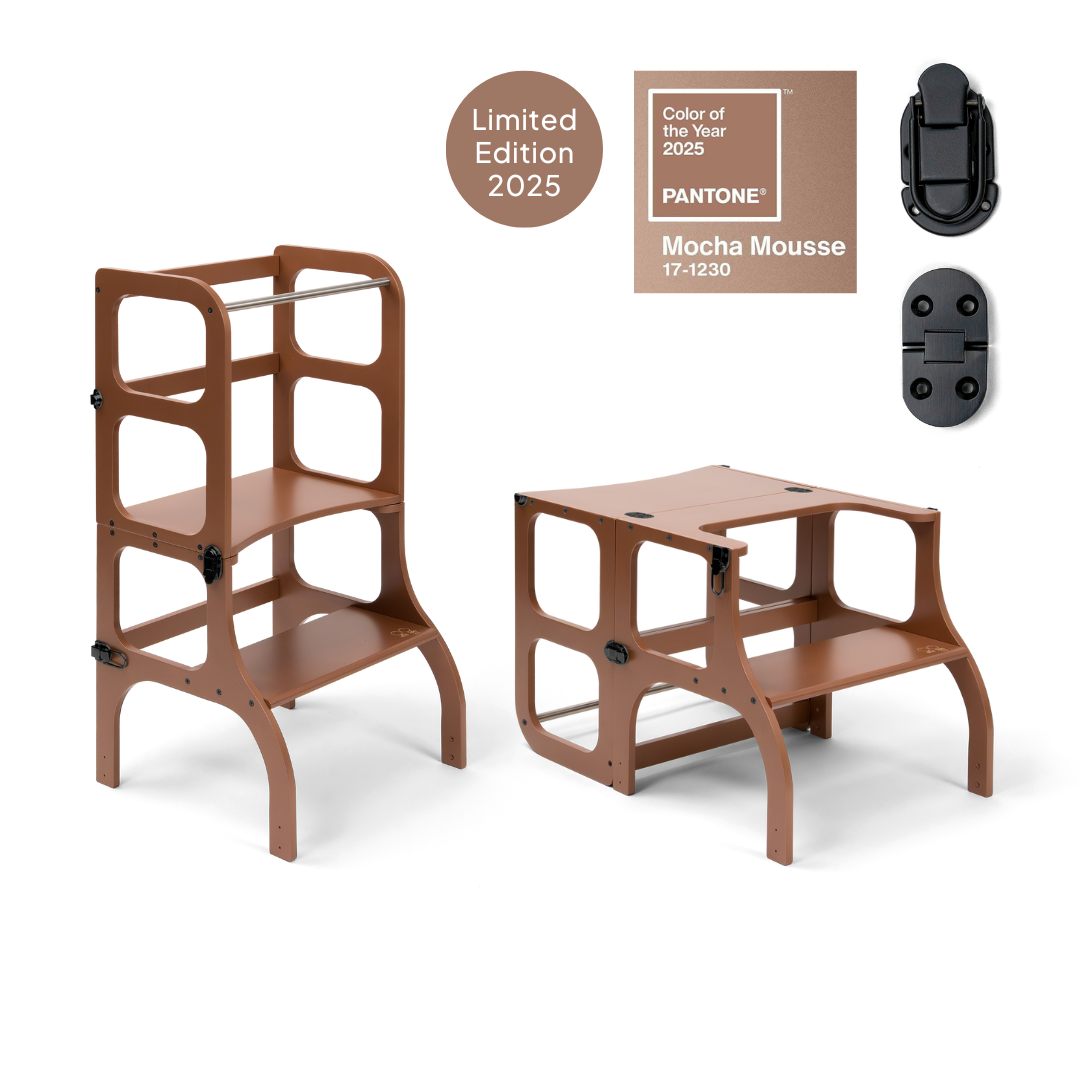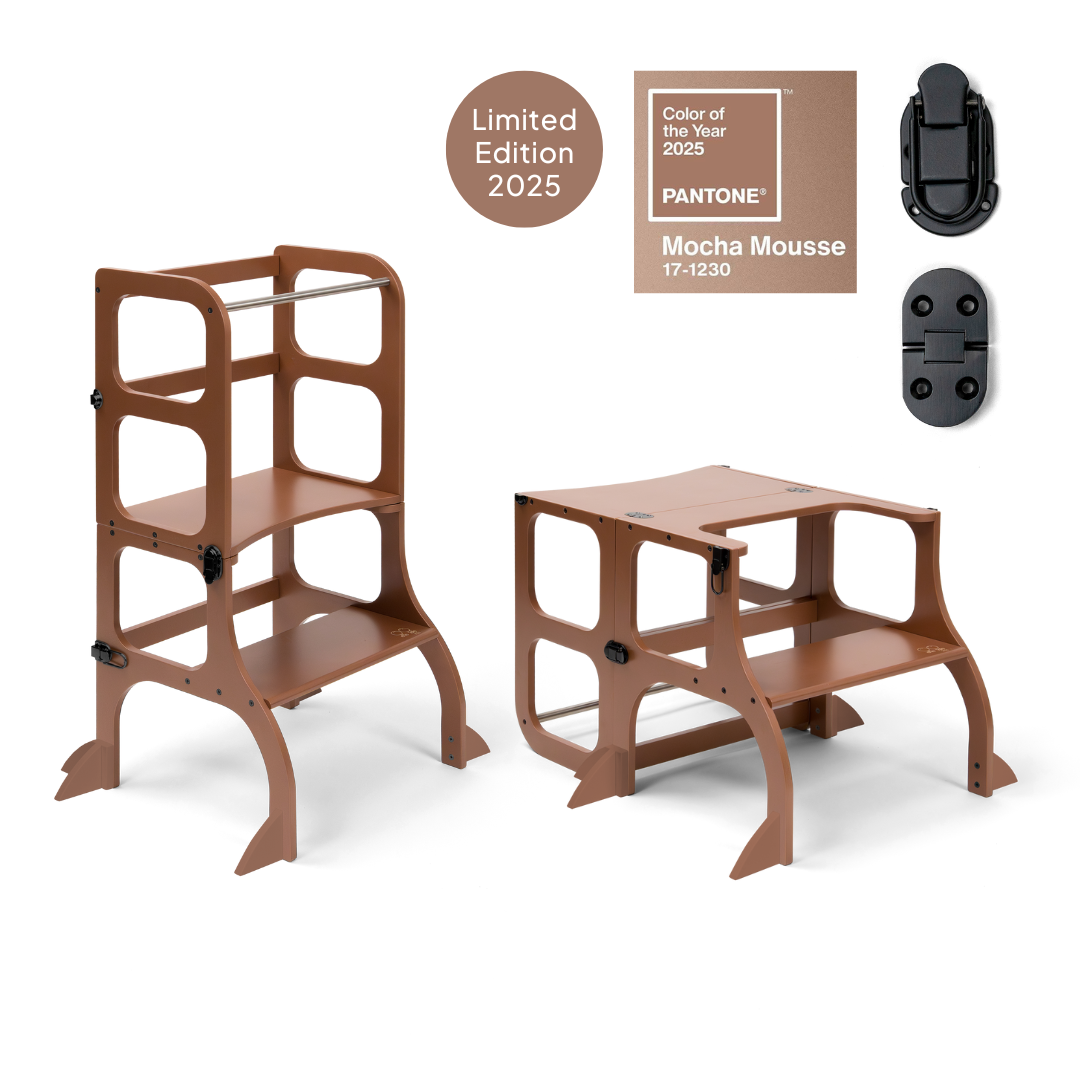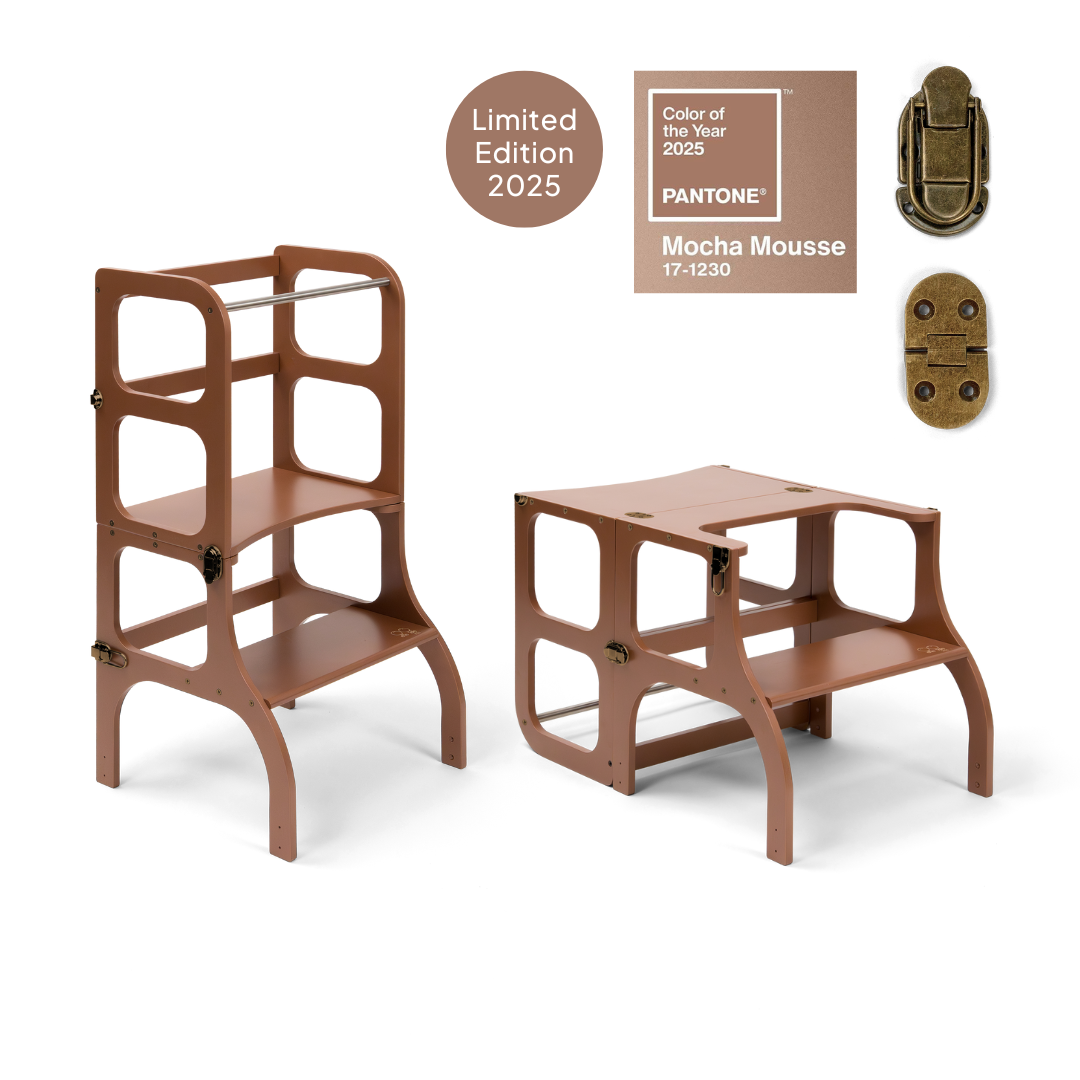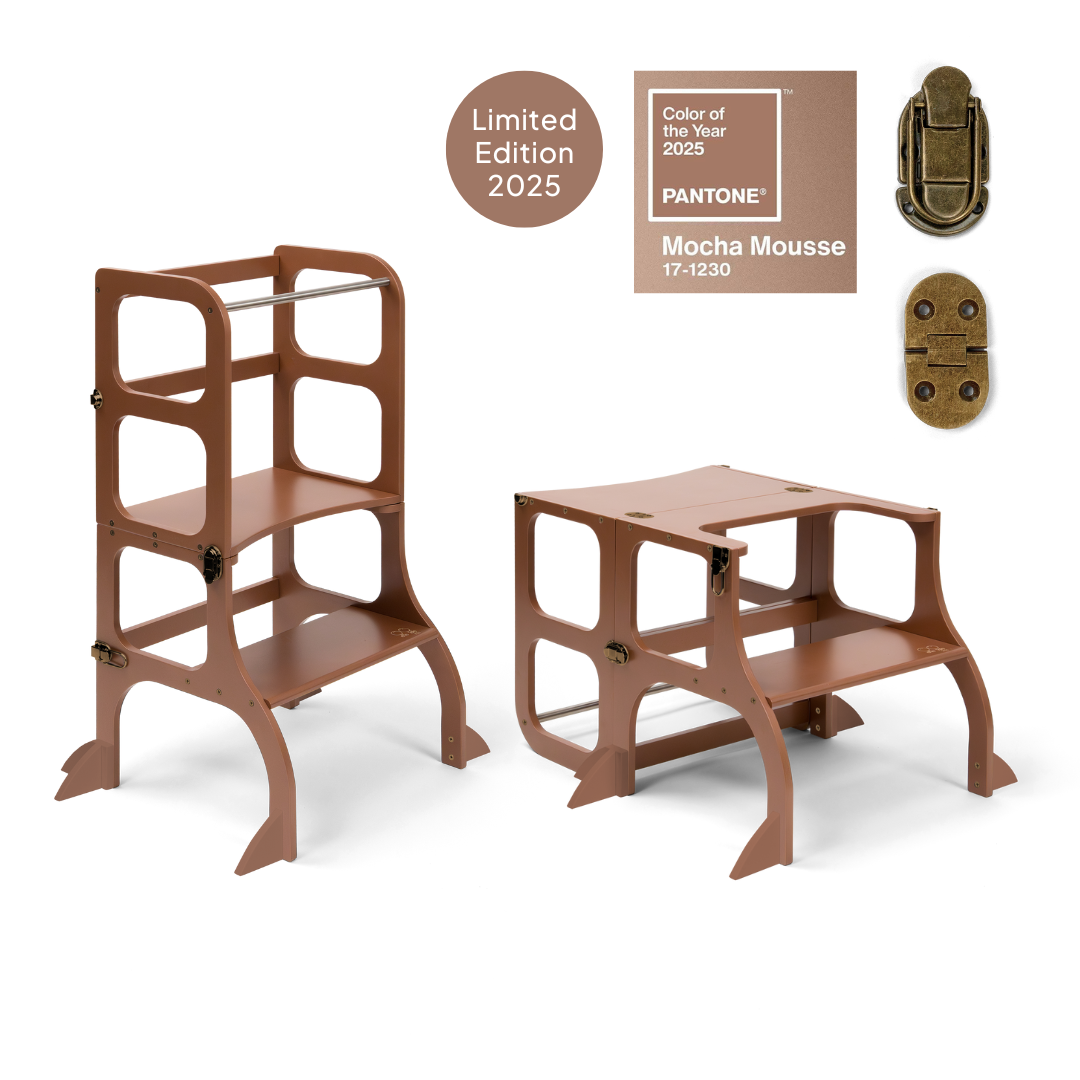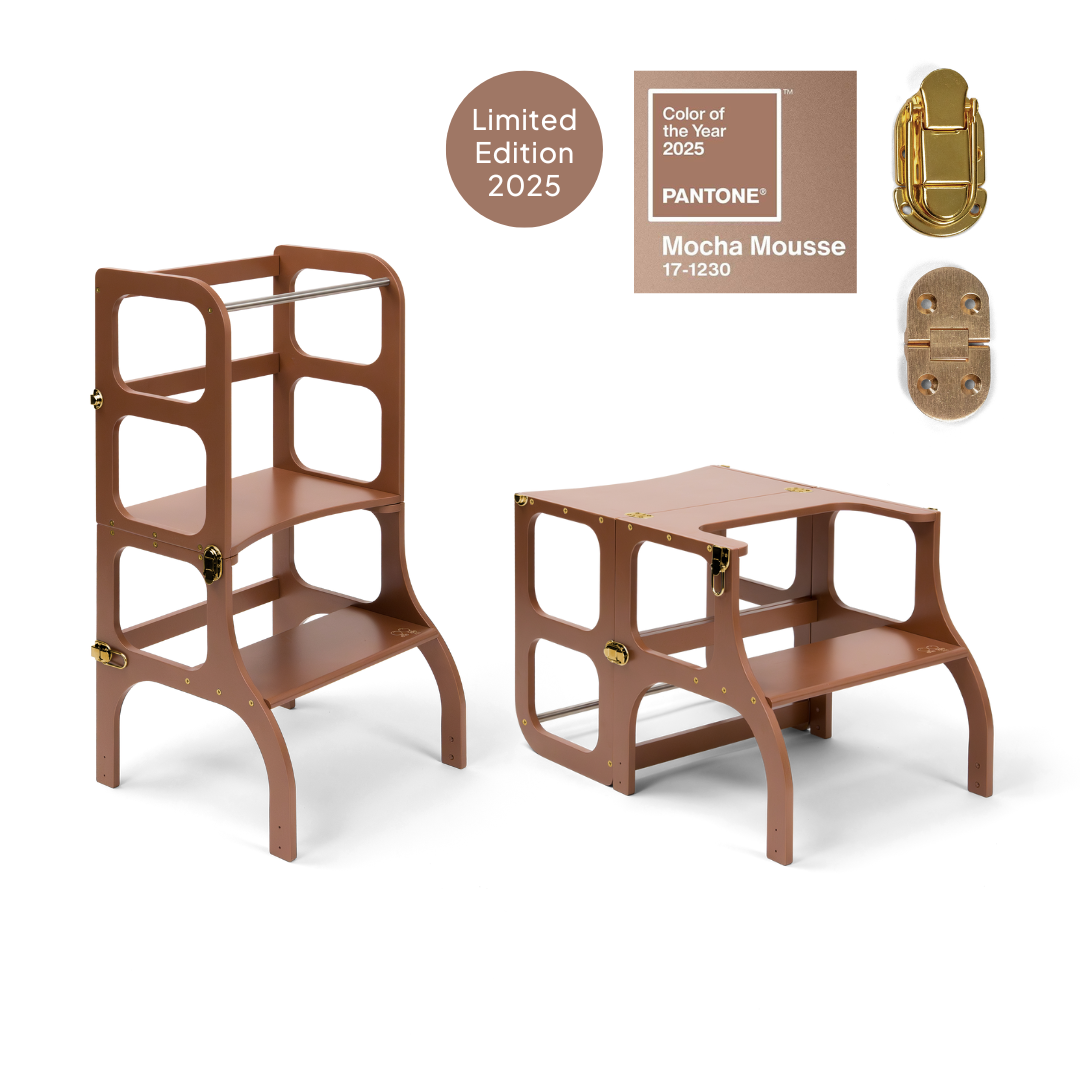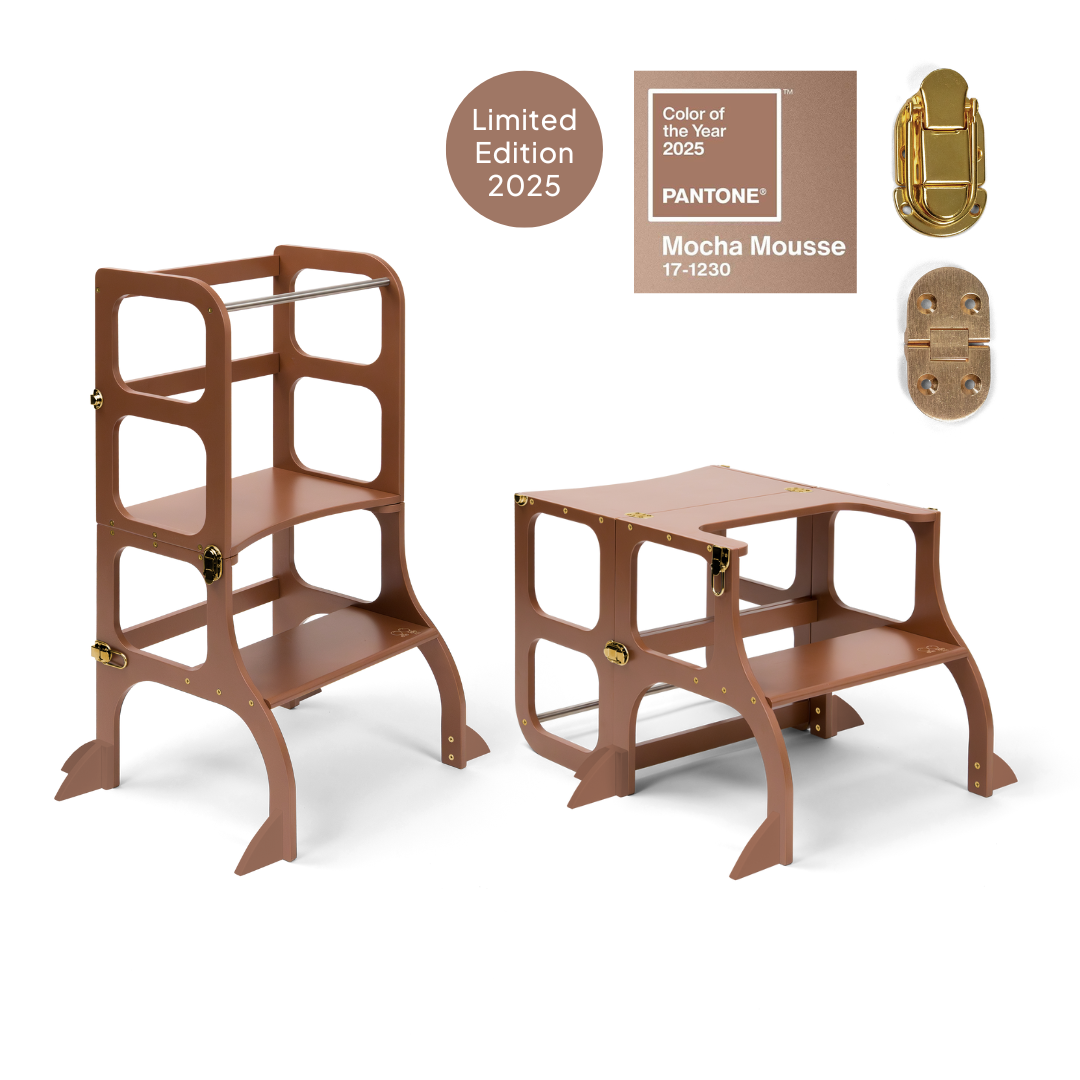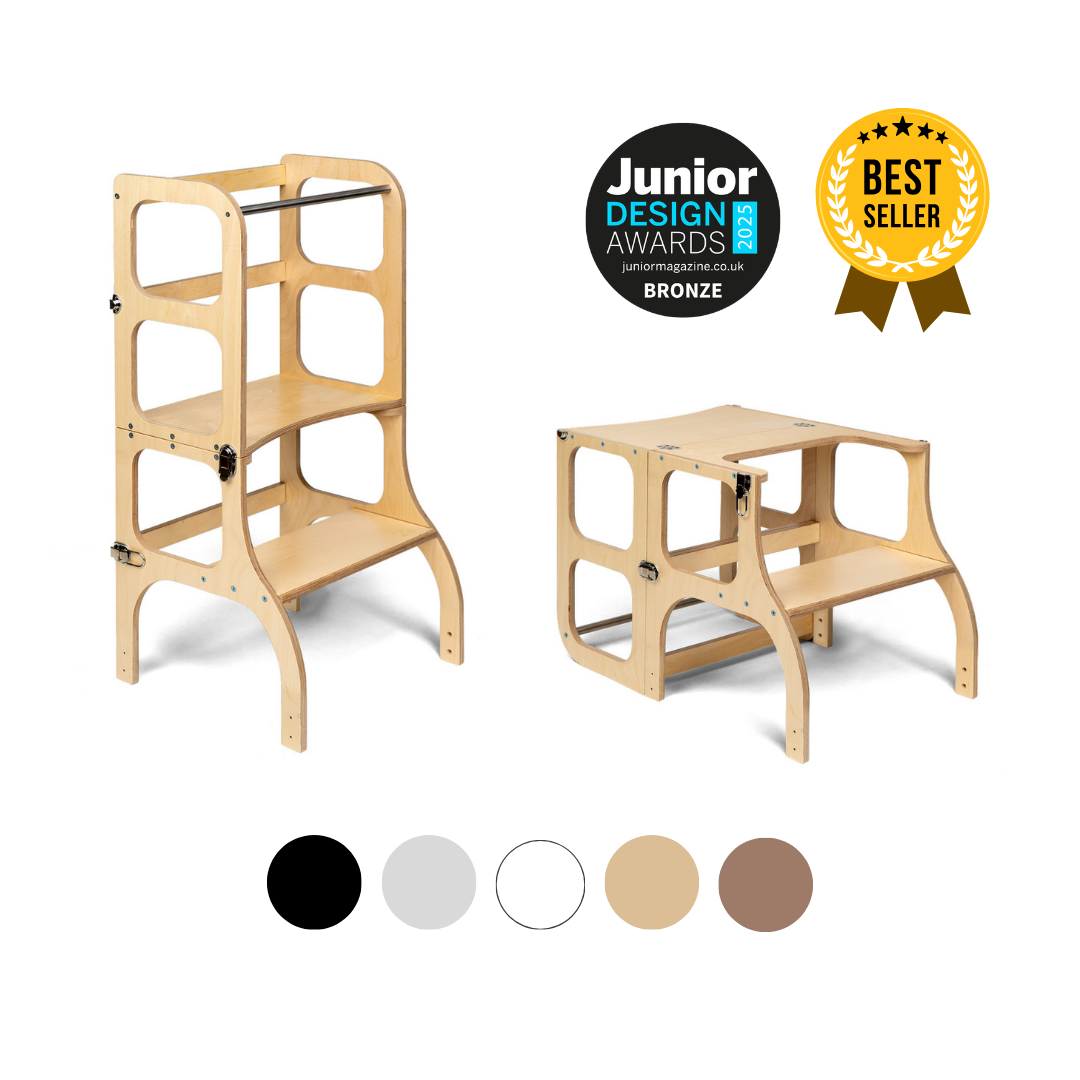Has your little one been interested in what’s happening on the kitchen counter? Do you have to lift them up to see what's happening just to avoid loud screaming?
Yes, most children are interested in what’s happening in the kitchen because we, parents, spend a lot of time there, and also tasty food comes from this magical place that satisfies hunger and our sweet tooth.
A learning tower is an excellent piece of furniture to introduce your children to the magic of the kitchen safely and in this article you will understand why they are essential for toddlers and their independence, and all other information on these amazing structures.
Content guide:
- What are Montessori helper towers for toddlers?
- Are helper towers safe?
- Benefits of using a helper tower
- When should I start using a helper tower?
- What can you do with a helper tower?
- Learning tower to table size for small spaces
What are Montessori helper towers for toddlers?
A helper tower (also called a kitchen helper, a tot tower, Montessori tower, a learning tower, or a toddler tower) is a stepping stool designed with high four walls and railings for a small child to be safe and secure. The size is described more in a lower section of this article.
At first, most parents bring their children up to the kitchen counter with the help of a stool or a chair to soon realize that this isn’t a safe option and you can't safely let them go on their own. Just because young children are a bit clumsy, uncoordinated, and can easily fall from a chair by misstepping or leaning backward. That’s a straight way to injuries.
These structures are Montessori friendly because they allow children the freedom of movement and they facilitate independence and practical life skills. They can climb in on their own if they want to pour some water, take fruit or smear some butter on the toast without any help from parents. That's a powerful feeling to be independent in getting food (until they realize that you need to get money to buy it:)).
We offer two kinds fof helper towers: static tower Step Up and convertible helper tower - table Step'n'Sit
Are helper towers safe?
Learning towers are designed to provide safety and that is the most important quality of it. Mobility, added independence and practical life skills are great but it’s nothing if it’s not safe for children to move in and out. As toddlers are not yet fully coordinated, their environment still has to be taken care of. This is where Montessori helper tower comes with its safety barriers. And we have found that it’s easier for them to climb in if there’s a small protection bar from the entry side so that they are still safe while easily available on their own. The shape of our helper tower is made for it to remain stable even if the child leans backwards while standing on it.
The durability of these towers is tested not only by children but also by fell-fed dads (not only the certification company). Our Step'n'Sit can withstand at least 100 kg of weight. So we're sure that they can be used by the whole family.
Even though they are really safe, you shouldn't leave your child unattended.
Benefits of using a helper tower
There are plenty of benefits and you'll start feeling them pretty soon. Here are the most frequently noticed:
-
A safe way for toddlers to be at kitchen counter height without worrying that they could fall.
-
Allows toddlers to be involved in cooking, cleaning and other activities in the kitchen.
-
Fine and gross motor skill development - by allowing children to climb in it themselves, they develop their gross motor skills, and by pouring water, cutting vegetables and mixing dough - they develop fine motor skills.
-
The self-confidence that they can pour their own drink, prep their own meal, i.e. take an apple, smear sandwiches etc. and don’t need anyone’s help. Developing self-identity being not reliable on others.
-
Less work for the parents - they can wash their hands and mouth on their own.
-
Practical life skills - teach your toddler kitchen skills early like cutting, washing hands, mixing ingredients. You all will be happy about it and they’ll be thankful afterwards.
-
Quality time together - by teaching new skills and showing how different ingredients taste you’re making new significant memories with your child that will improve your bond.
When should I start using a helper tower?
Generally, the helper tower could be used for around 18 months and it is the recommended age. Around this time most children are confident enough on their feet and can walk steadily. For some it may be already at 12 month age, so you should really see for yourself and see what your child is capable of. That is the most important thing to start using a helper tower.
This is only the beginning because your little one will use this stepping stool at least until the age of 5 to reach higher places and do more and more complex tasks on his own.
What can you do with a helper tower?
There are many and different use cases for a standard helper tower, and we can differentiate them by age:
18 - 24 months
-
Develop gross motor skills like climbing.
-
Practice washing hands and some unbreakable dishes.
-
Let them observe your actions in the kitchen so that it’s easier later on (better than having them at your feet begging to see what you’re doing).
2 - 3 years
-
Wash vegetables and fruit.
-
Help in food preparation.
-
Putting the plate in the sink and wash/rinse the dishes.
-
Brush their own teeth, wash their face at the bathroom mirror.
3 - 5 years
-
Stir different ingredients for sauces, pancake dough.
-
Assemble simple foods and dishes like sandwiches or cereal.
-
Peel vegetables with a peeler.
-
Cut vegetables and fruit.
-
Roll and cut dough.
Save space & money with a 3-in-1 item
Not all homes have plenty of room for a lot of bulky furniture. There's a solution for smaller apartments to save space.
We have designed the helper tower to be as efficient and cost-effective as possible. For this reason Step’n’Sit is made from lightweight material birch plywood, making it easy for children to move it around the room. This way they can push it towards the counter or fold it to the table position themselves when they are a bit older.

The height of most learning towers is equal to the height of standard kitchen counters (90 cm or 35 1/2 inches) so that the use of it is seamless and there wouldn't be anything in the way for the two little curious hands. The platform space is 40 cm wide so that it's compact for small areas, yet there's plenty of room for a child to turn around and reach their objects of interest.
Conclusion
Helper towers are almost life-changing both for you and your toddler. It will open up steps for an independent life with so many practical skills that you might be amazed how fast kids learn and grow up. Soon enough you'll be cooking gourmet dishes together with your little kitchen helper as your sous-chef.
Do have any more questions we could answer? Feel free to reach out to us via email support@ettetete.com.



